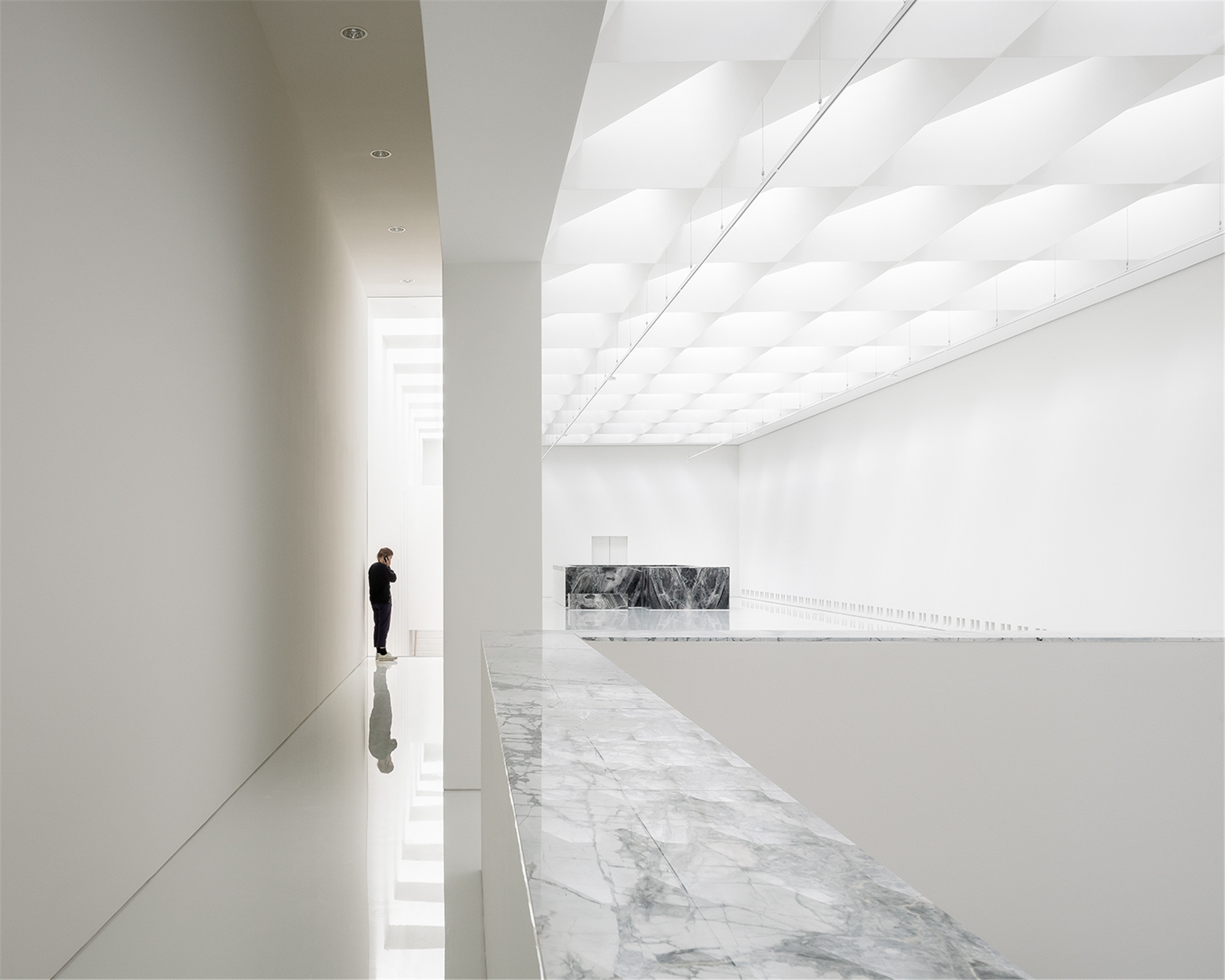
设计单位 KAAN Architecten
项目地点 比利时安特卫普
项目状态 即将建成
建筑面积 3万平方米
事务所受弗拉芒政府委托,在2003年赢得国际竞赛后,就一直致力于比利时安特卫普皇家艺术博物馆(KMSKA)复杂的总体规划与翻新扩建工作,将现代之魅力赋予这座建于19世纪的被遗忘已久的辉煌之美中。
After winning an international competition in 2003 commissioned by the Flemish Government, Dutch architecture office KAAN Architecten has worked intensively on the complex masterplan, renovation and extension of the Royal Museum of Fine Arts in Antwerp (Belgium), also known as KMSKA (Koninklijk Museum voor Schone Kunsten Antwerpen), bringing contemporary allure to a glorious, overlooked beauty of the 19th century.
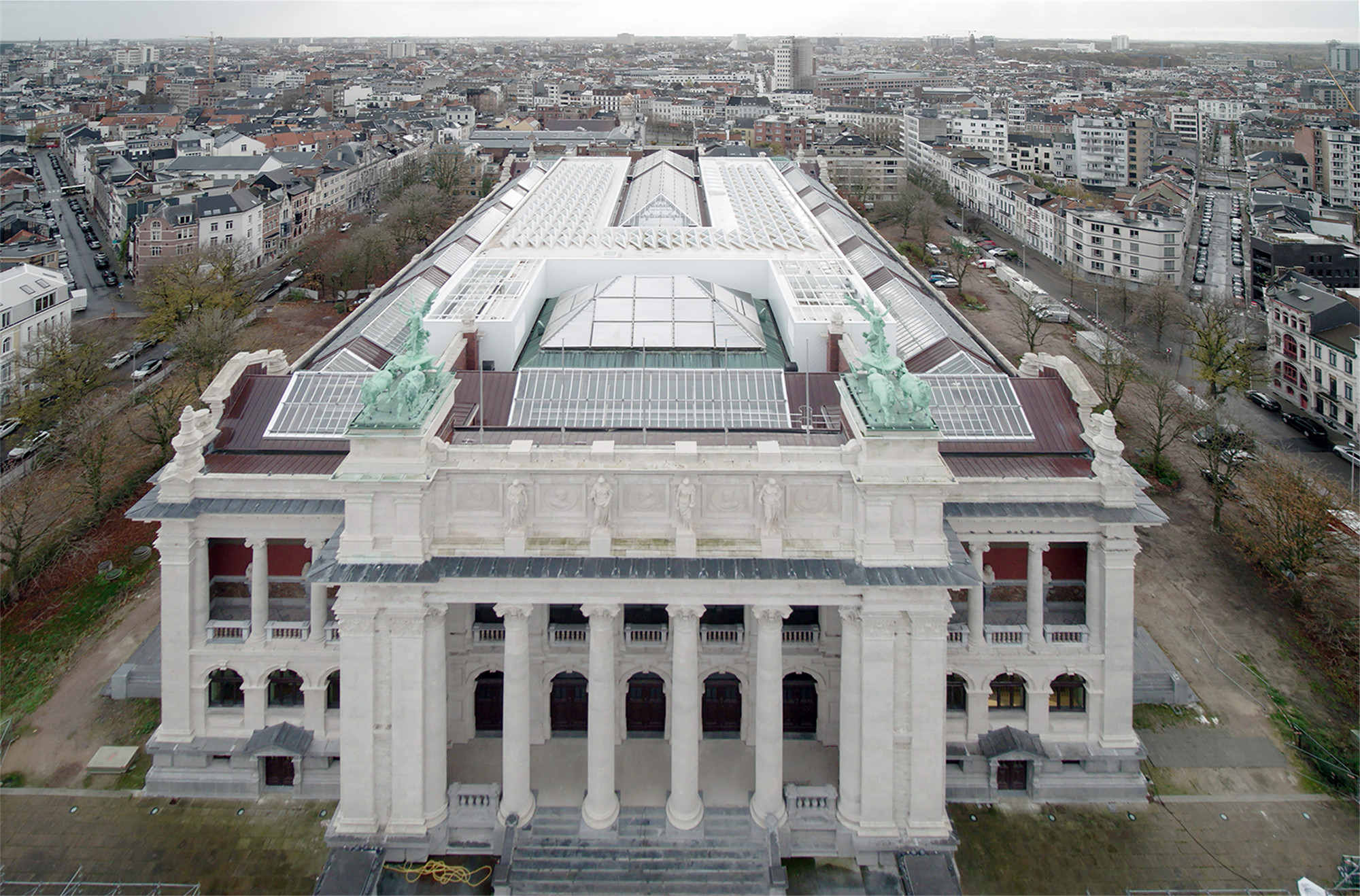
博物馆建筑不仅是安特卫普市大胆的新古典主义建筑最后的典范之一,还收藏了涵盖了七个世纪的艺术作品:从早期尼德兰绘画到表现主义,囊括手稿、绘画和雕塑。弗拉芒政府的文化部门已投资1亿欧元,用于对建筑进行整体翻新。
In addition to being one of the last examples of bold neoclassical architecture in the city of Antwerp, the museum houses a rich art collection that embraces seven centuries of art: from Flemish Primitives to expressionists, from paintings to drawings and sculptures. The Department of Culture, Youth and Media of the Flemish Government has invested approximately 100 million euro in the overall renovation of the building.
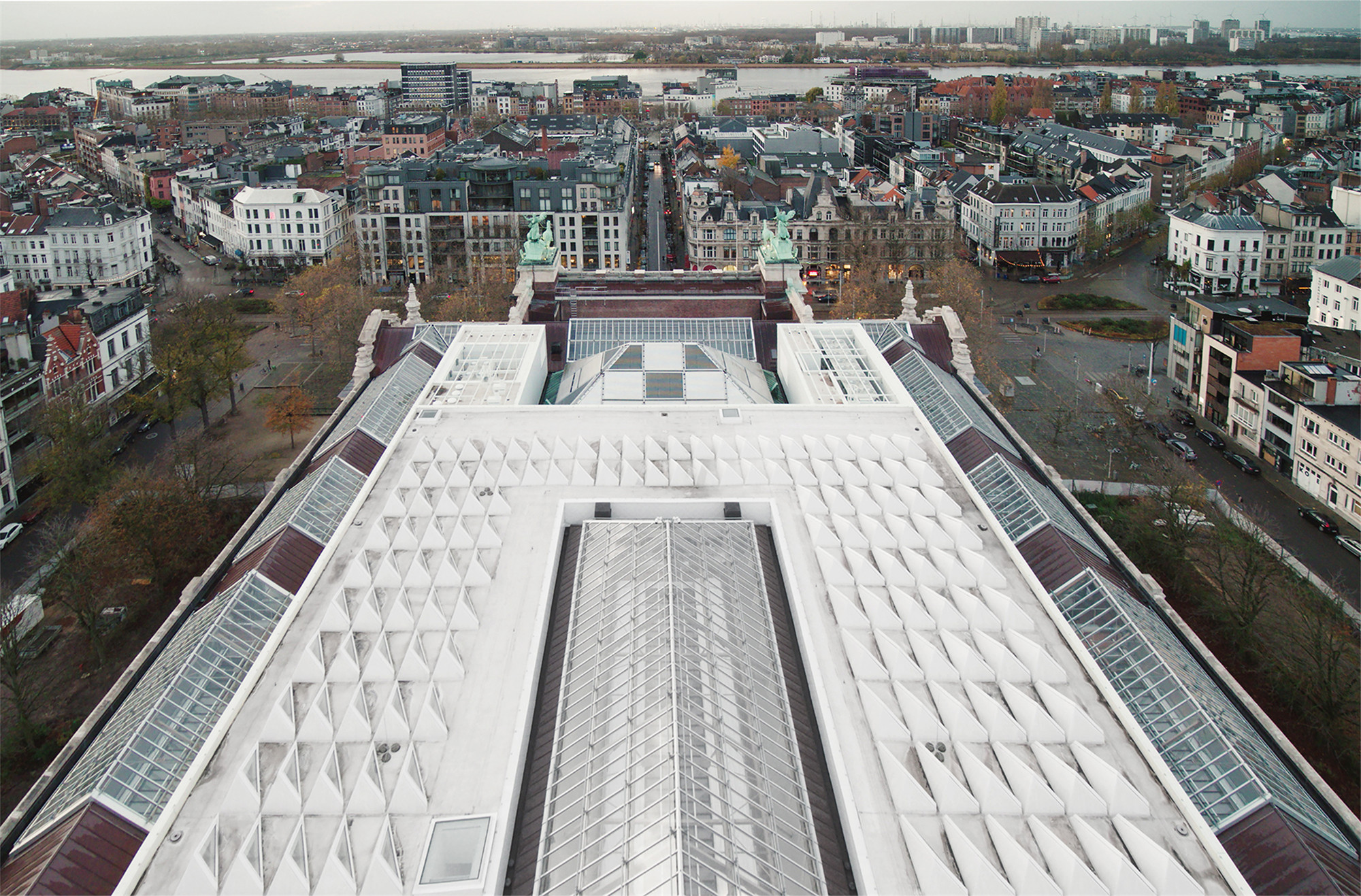
博物馆最初由建筑师Jacob Winders and Frans Van Dyck于19世纪设计而成,在1890年对外开放。它高耸于16世纪的城堡遗址之上,与城市夺目的星状肌理紧密交织。
Rising above the remains of the 16th century citadel and intertwined within the remarkable star-shaped urban fabric, the museum was originally designed in the 19th century by architects Jacob Winders and Frans Van Dyck. It opened to the public in 1890.
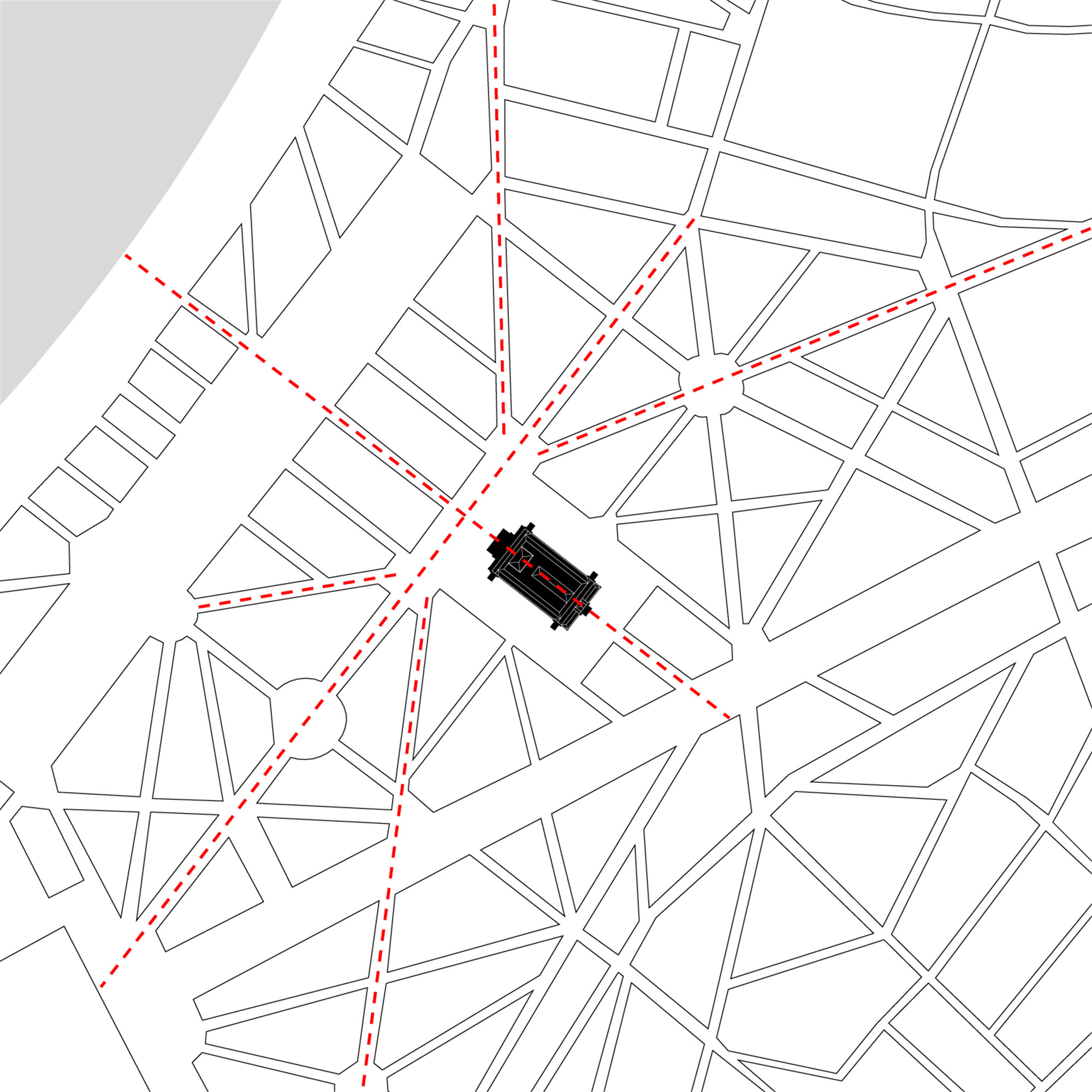
KMSKA最初为一间日间博物馆,游客穿梭长廊和朝向城市或内部庭院的露台,令人赞叹的艺术品和外部景观环绕其间。20世纪时,博物馆的展陈设计和布局迎来了实质性的提升,原有的流线及与城市的关系也进行了调整。
KMSKA was conceived as a daylight museum, where visitors would enjoy a promenade surrounded by stunning artworks as well as the external landscape, witnessed through its multiple lookouts over the city and the inner patios. During the 20th century, new developments in exhibition design and museum distribution brought fundamental changes to the building's layout, modifying the original circulation route and the connection with the city.
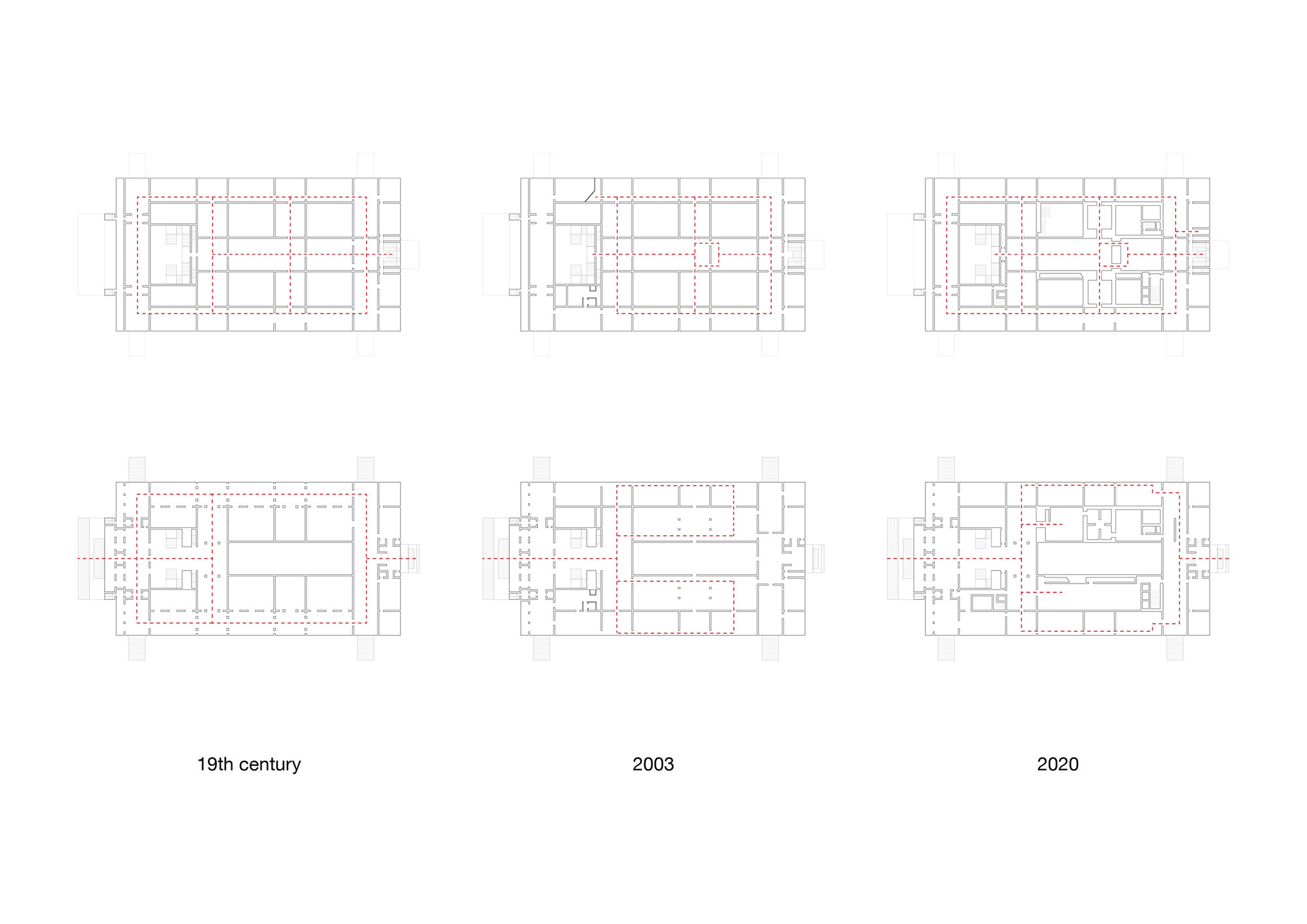
在21世纪初期,事务所开始着手于博物馆的总体规划及翻新扩建时,安特卫普南部的社区开始依托公共投资和城市改造,逐步显现出更大的价值。设计师最为勇敢的决策之一,是将博物馆的扩建部分完全隐藏于现有的内部结构中,不对外观做出改动,以在这一变化万千的地块中,彰显这一历史建筑的价值与韧性。
In the early 2000's, while KAAN Architecten started working on the museum’s masterplan, renovation and extension, the southern neighbourhood of Antwerp began to progressively gain greater value through public investments and urban transformation. One of the architects' most intrepid initiatives was to completely conceal the extension of the museum within its existing inner structure — the new addition is not visible from the outside — in order to highlight the heritage value and the resilience of the outstanding 19th century building, nestled in this fast-changing district.
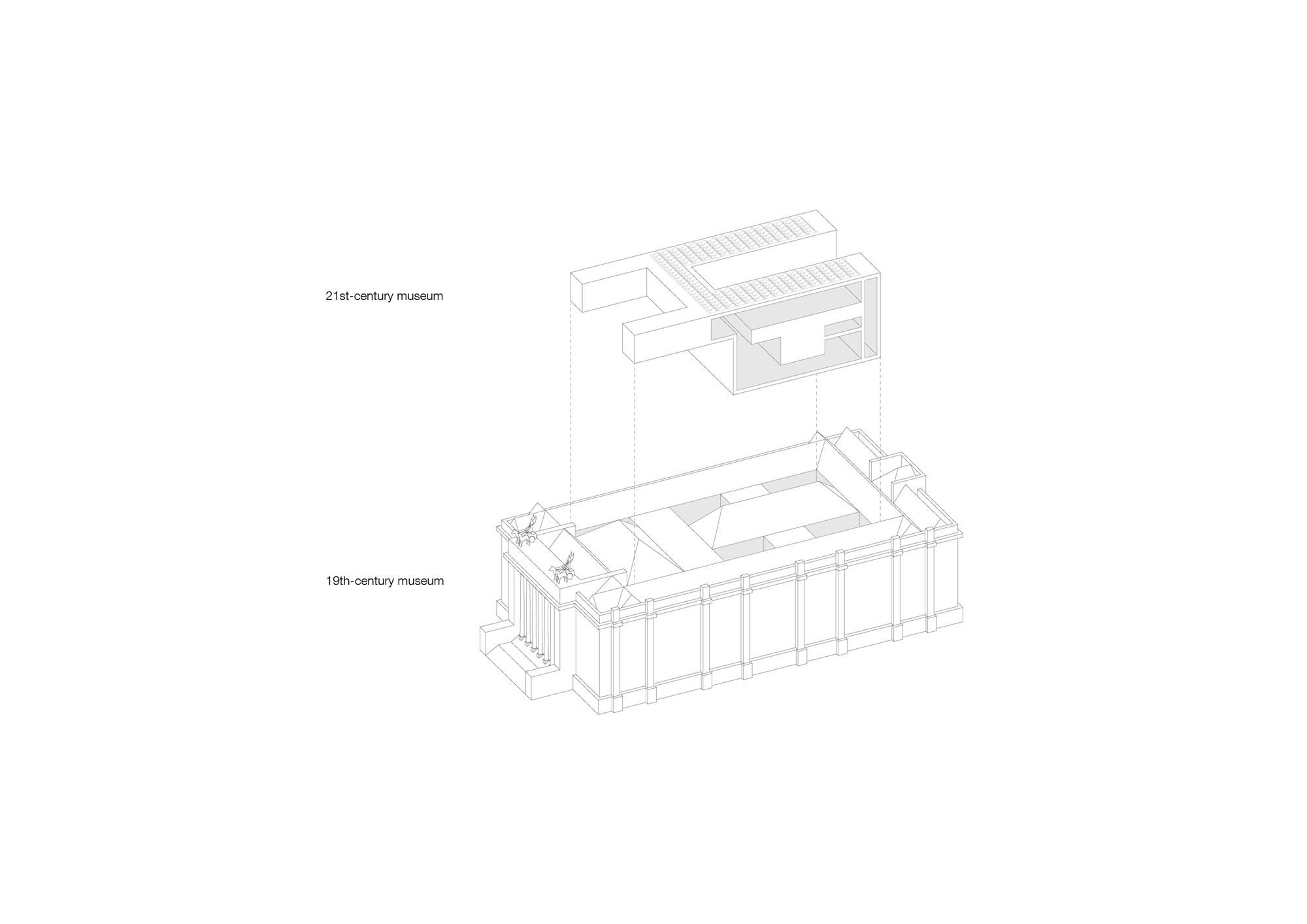
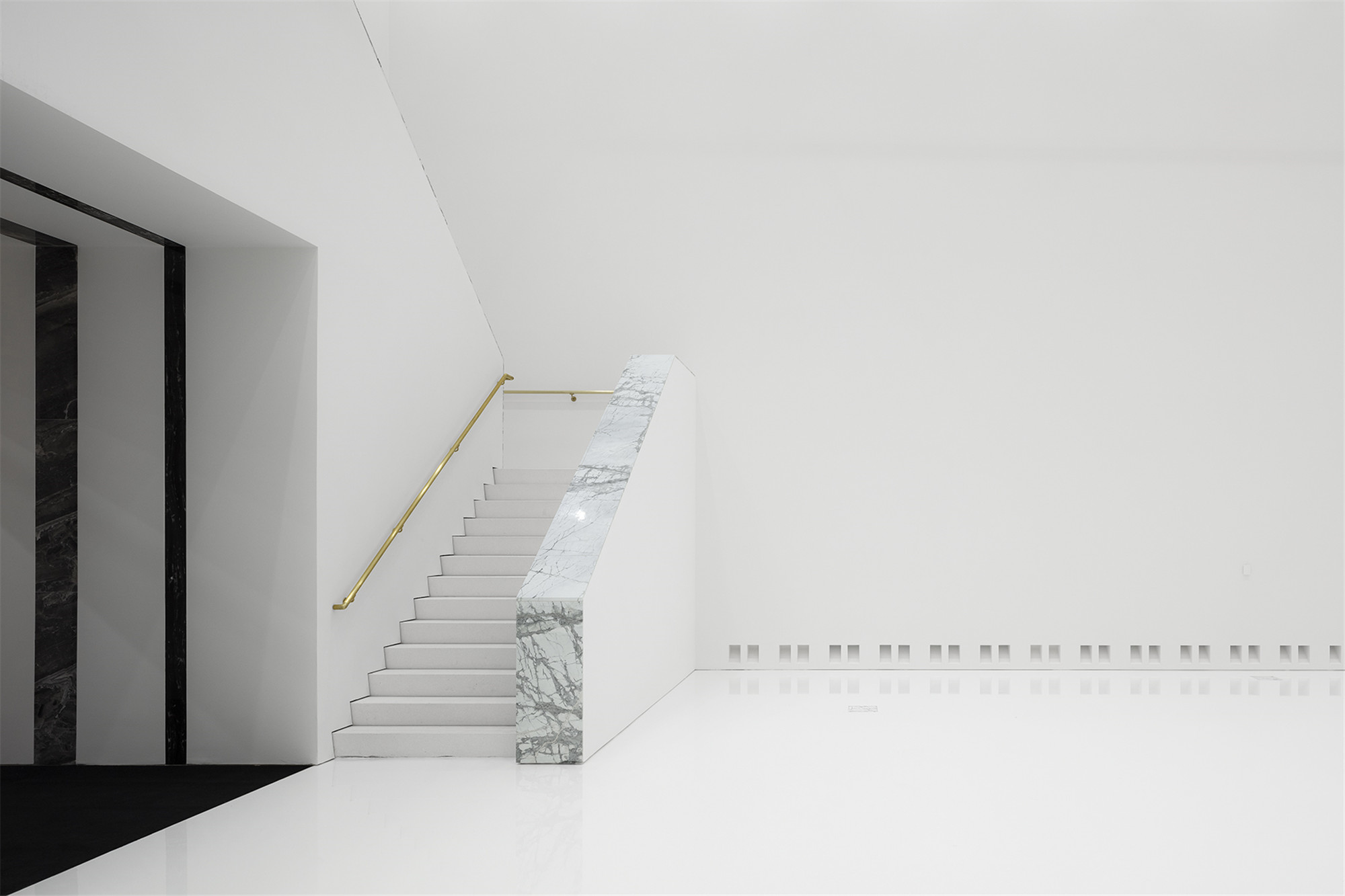

扩建部分与既有建筑和谐相依,未对原有的鲜明特征带来影响。事务所创始人之一Dikkie Scipio教授表示:“21世纪和19世纪的博物馆都是如此的不同和强烈,它们在尺度、光线和氛围上体现出标志性的变化,它们同时被设计成灵活的空间,面向未来的展览留出准备。”
The extension co-exists with the powerful historical structure without diluting its monumental character. “Both the 21st and the 19th century museum couldn’t be more different and more intense. They embody an emblematic contrast in dimensions, light and atmosphere, while being designed as flexible spaces to welcome future exhibitions.” affirms Prof. Dikkie Scipio, architect and co-founder of KAAN Architecten.
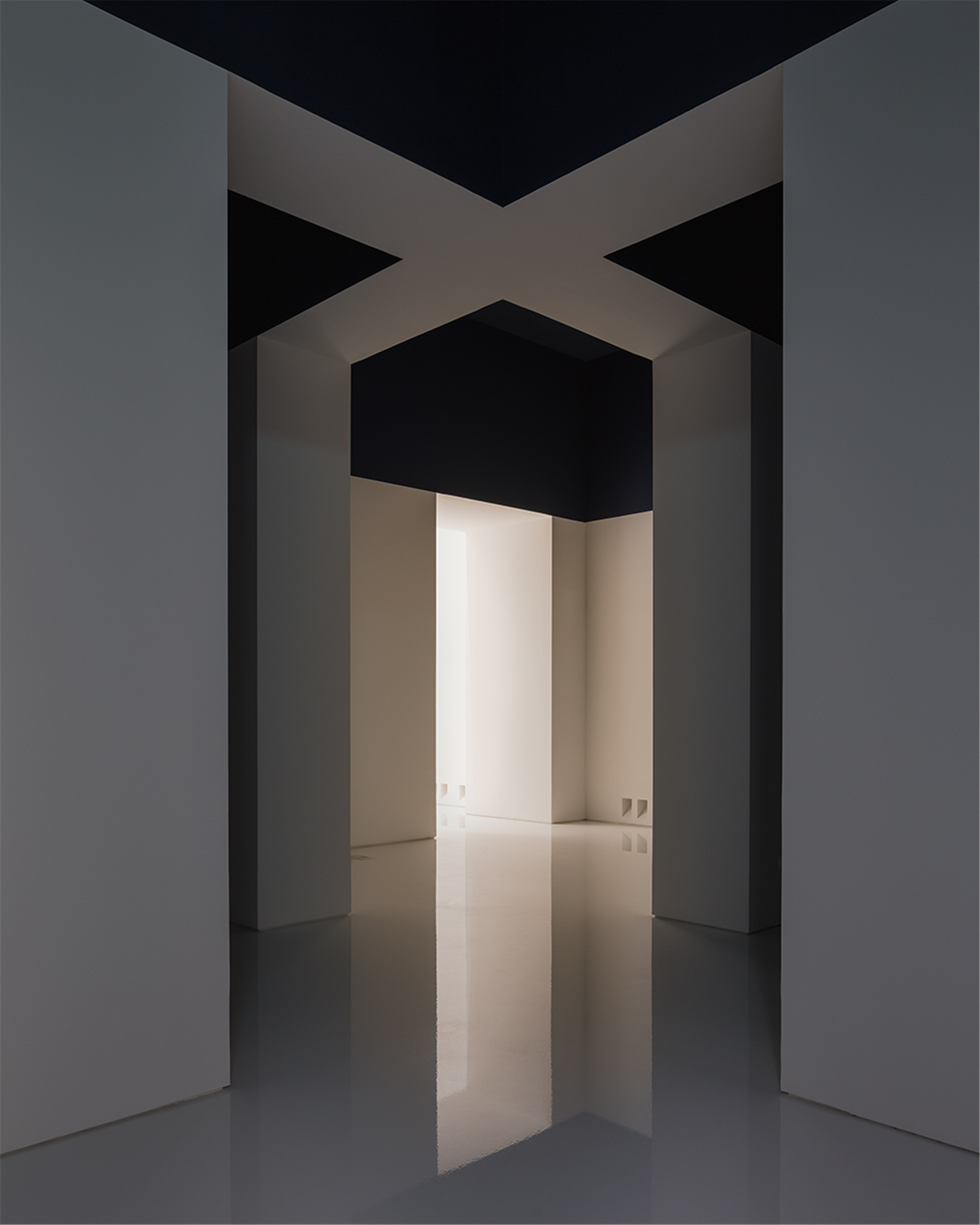
博物馆现被分为三个区域:公共入口区、中心展览空间和办公区。从利奥波德·德瓦尔广场出发,穿过宏伟的楼梯便可进入到博物馆。通过修复后的大型橡木门,包括互动信息区、餐厅、礼堂、设有咖啡角的书店和通向街道层的螺旋楼梯便出现在眼前。街道层里设置了图书馆、衣帽间,以及供大型团体使用的第二入口。
KMSKA is now divided into three realms: a public entrance area (feel), central exhibition spaces (see) and offices (work) at the rear side of the building. From Leopold de Wael square, a grand staircase grants access to the museum: large restored oak doors open onto the entrance hall, which features several museum facilities such as an interactive information zone, a café, an auditorium, a bookshop with a coffee corner and a circular staircase to the street floor level where a library, a cloakroom and a second entrance for large groups are located.

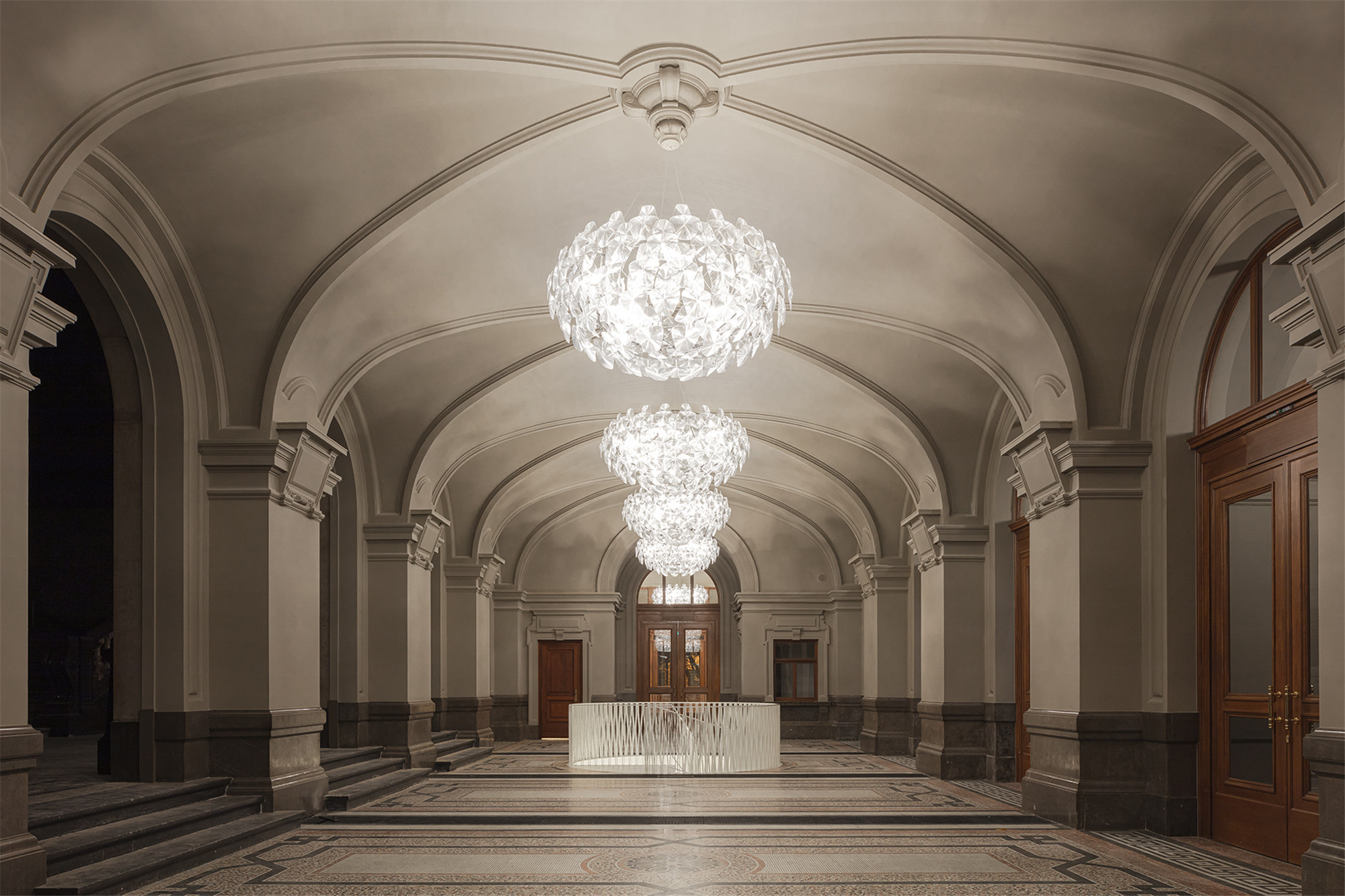

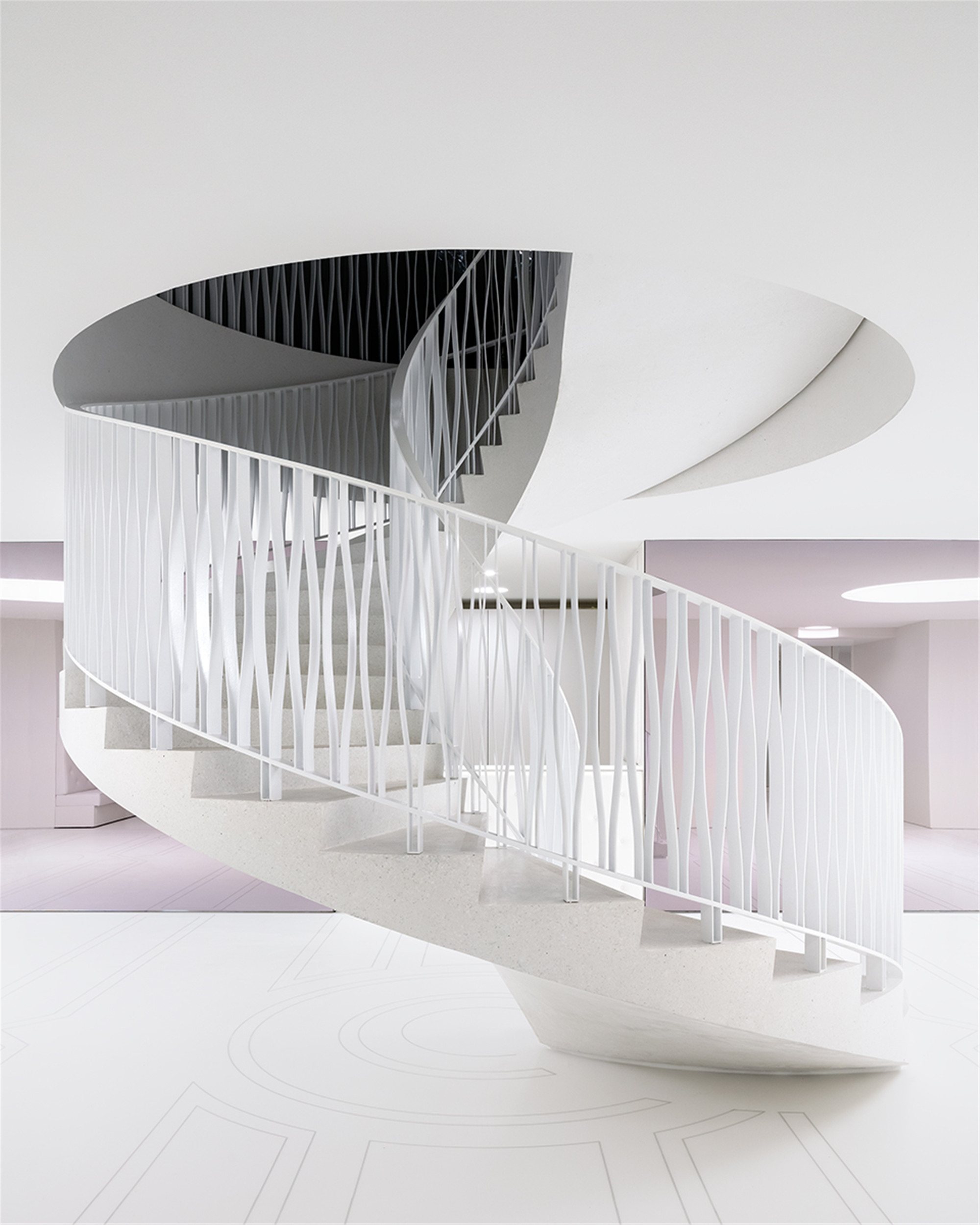
经过入口大厅,来访者便会进入到一个名为majestic de Keyserzaal(以艺术家Nicaise de Keyser命名)的过渡空间,在此,游客被引向两种不同的体验流线:一个经大楼梯到装修后的19世纪博物馆的核心层;另一个继续向前,通向新建的21世纪博物馆。
The entrance hall leads to the majestic de Keyserzaal (named after artist Nicaise de Keyser), which serves the pivotal role of introducing the visitors to two different routes and experiences: one, going up the grand staircase, leads to the main floor of the renovated 19th century museum; the other, continuing straight ahead, leads visitors to the new 21st century museum.

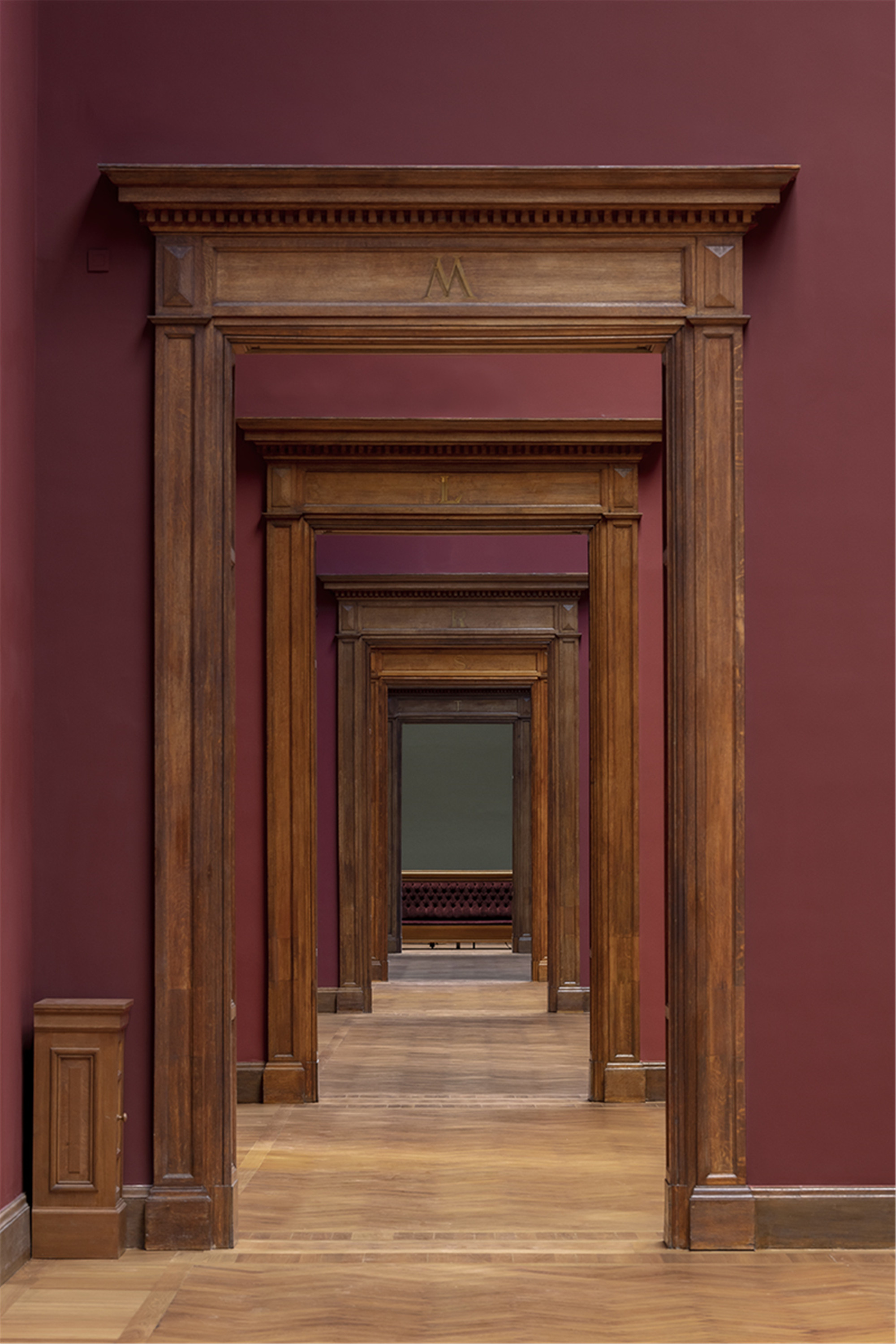

历史空间的展览室由深粉色、绿色和红色组成。橡木门、高大的柱子和石膏装饰的天花板共同体现了古老又宏伟的氛围。装饰过程中对色调的选择上与博物馆的原始颜色紧密相关。
While visiting the historical museum, guests walk through an enfilade of exhibition rooms tinted in dark pink, green and red; oak doors, tall columns and ceiling ornaments in plasterwork collectively convey a feeling of ancient grandeur. The colour palette chosen during the renovation process directly relates to the museum’s original colours.


一楼大窗户的设计,将明亮朴素的室内同周边环境联系起来;而在二层,正厅被宽大的玻璃天篷照亮,这里还配有造型优雅的沙发,以供欣赏艺术名家作品。令人印象深刻的鲁本斯和凡戴克大厅将举办重要的展览,因此被布局于建筑的核心。
On the first floor, large windows visually connect the bright yet modest interiors with the surroundings, while on the second floor, the main halls are lit by wide glass canopies and equipped with elegant sofas for those enjoying the art masters. The impressive Rubens and Van Dyck halls will host some of the highlights of the collection and are therefore positioned at the very core of the building.
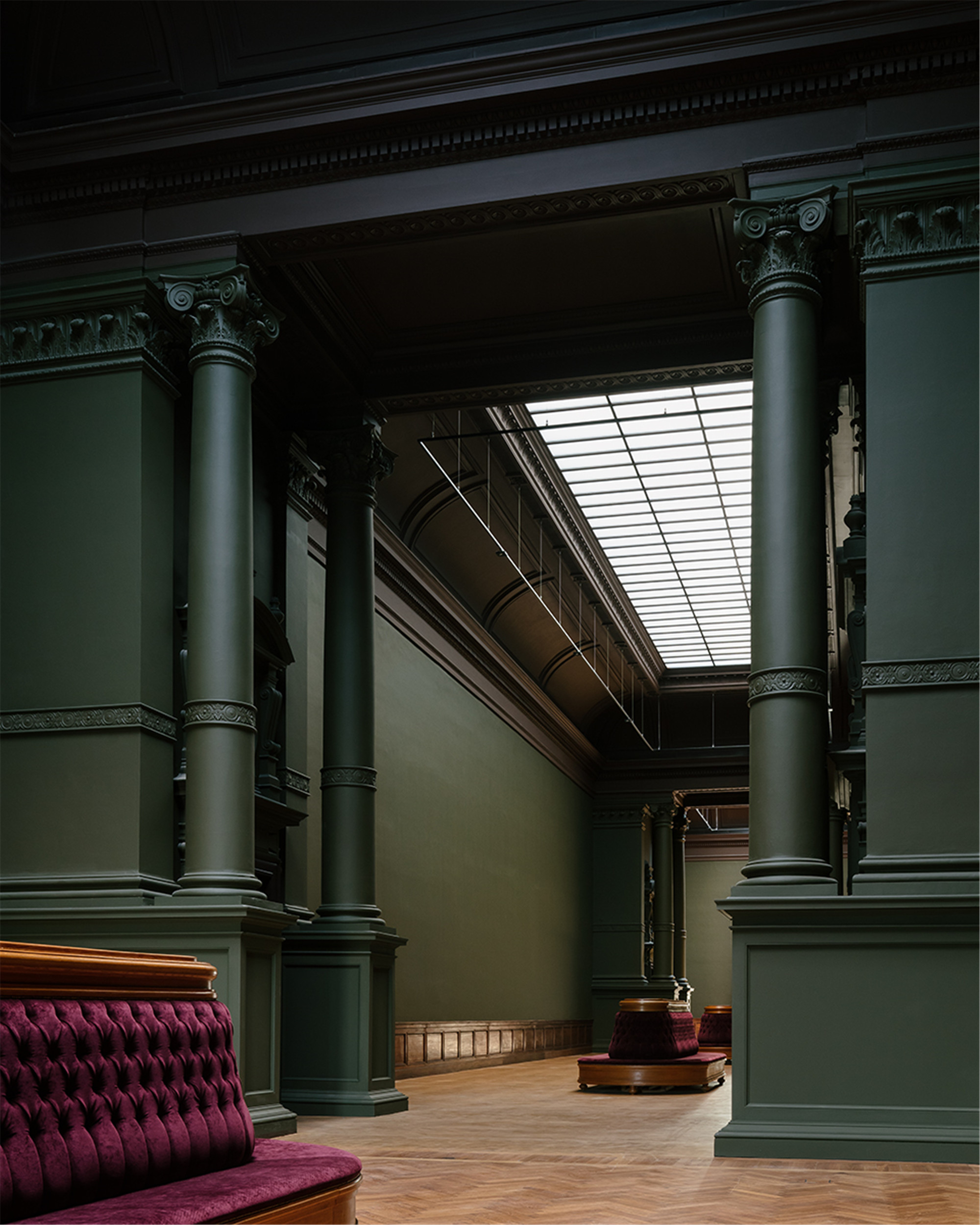


藏品库被布置在原有的防空洞内,位于两个主要展馆的下方的街道层。这样一些超大尺寸的绘画作品可以通过特定的垂直舱口,传递到相邻的大厅内。
The collection depot, relocated inside the original location of the air-raid shelter bunker, is located underneath the two main exhibition halls, at the street level. Extra-large paintings, taller than the high doors, can travel from the depot through one of the original 19th century hatches to the upper floors. From this position and following a specific route, a track of slender vertical hatches can deliver the paintings to the contiguous halls.
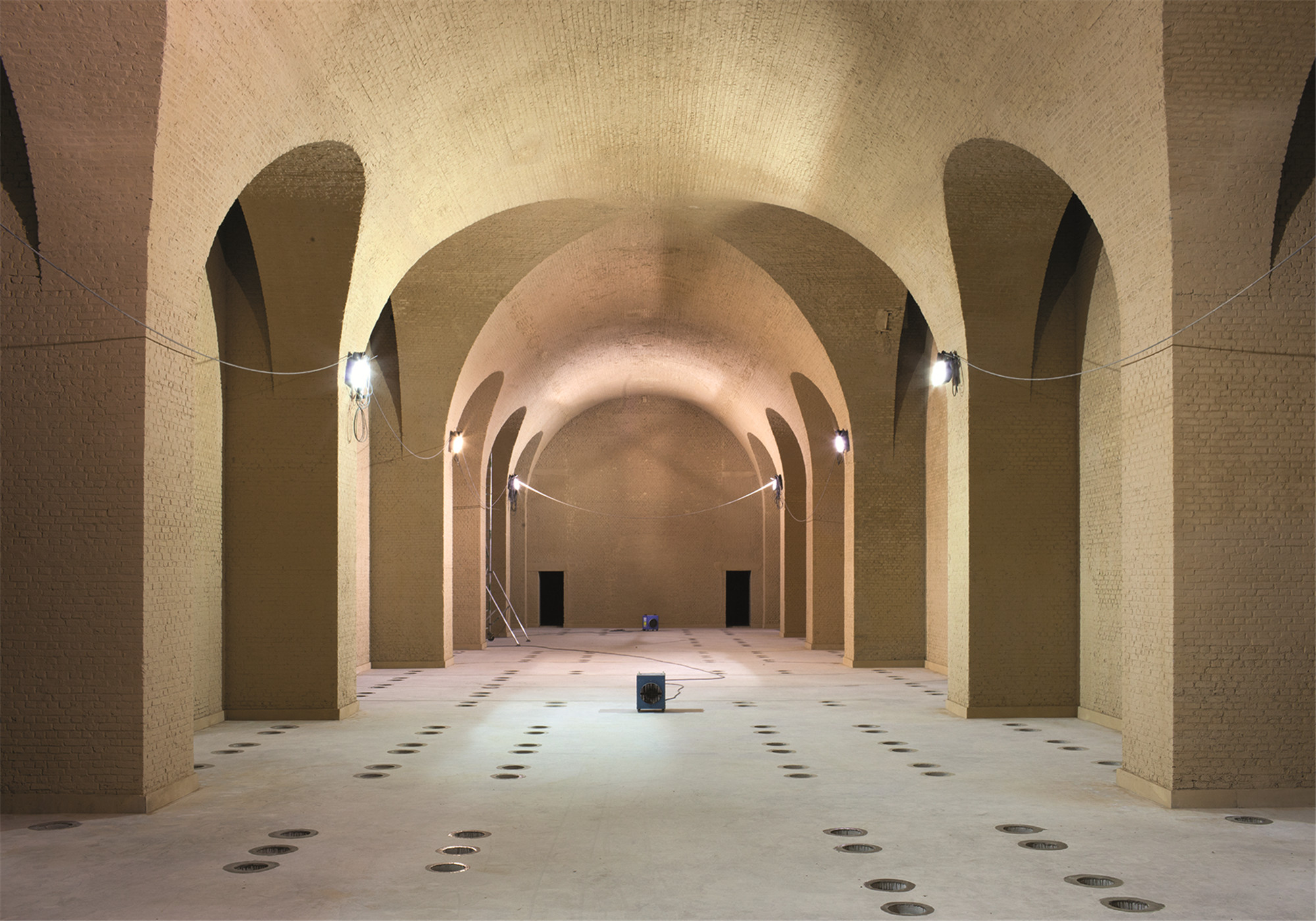
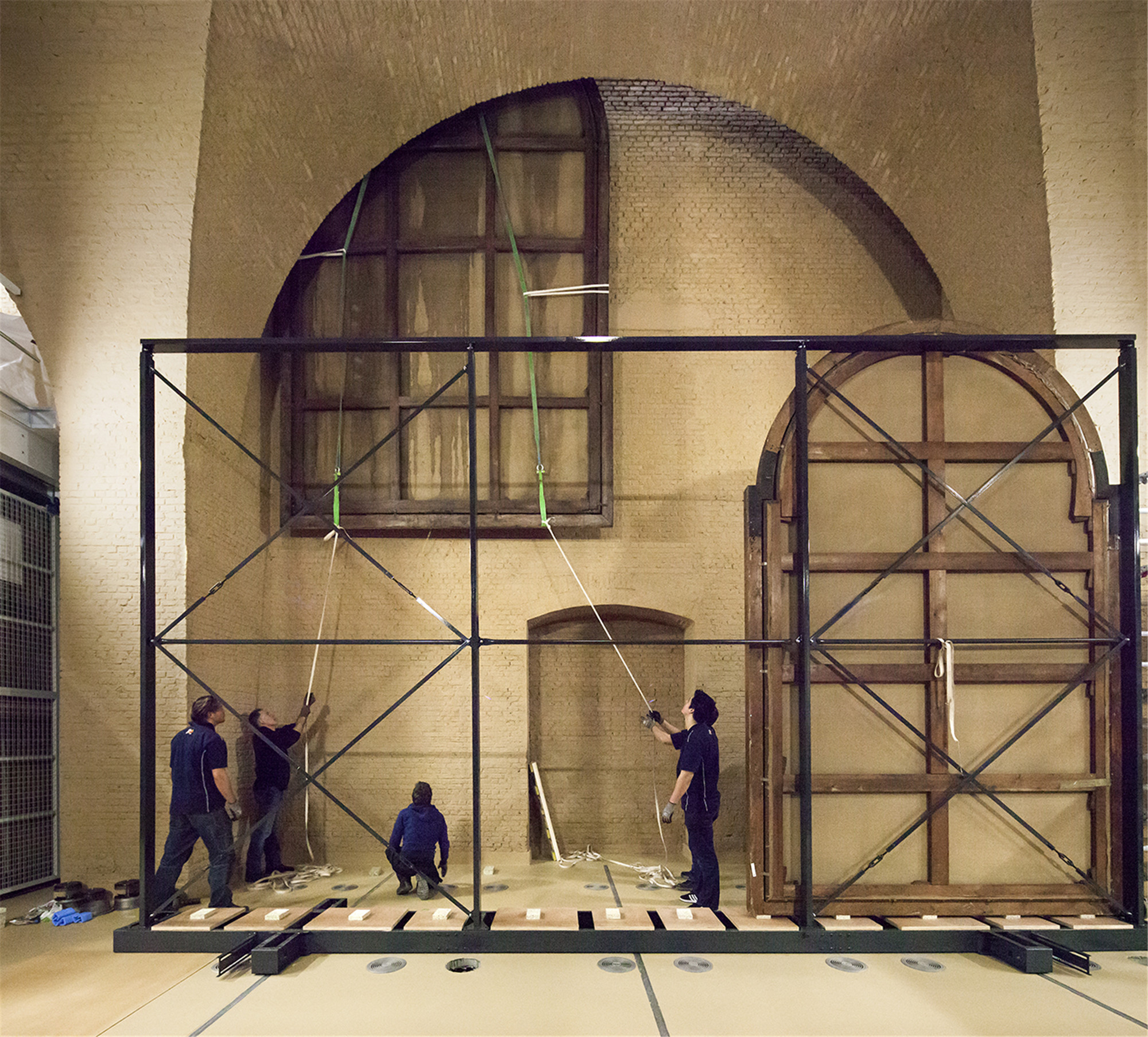
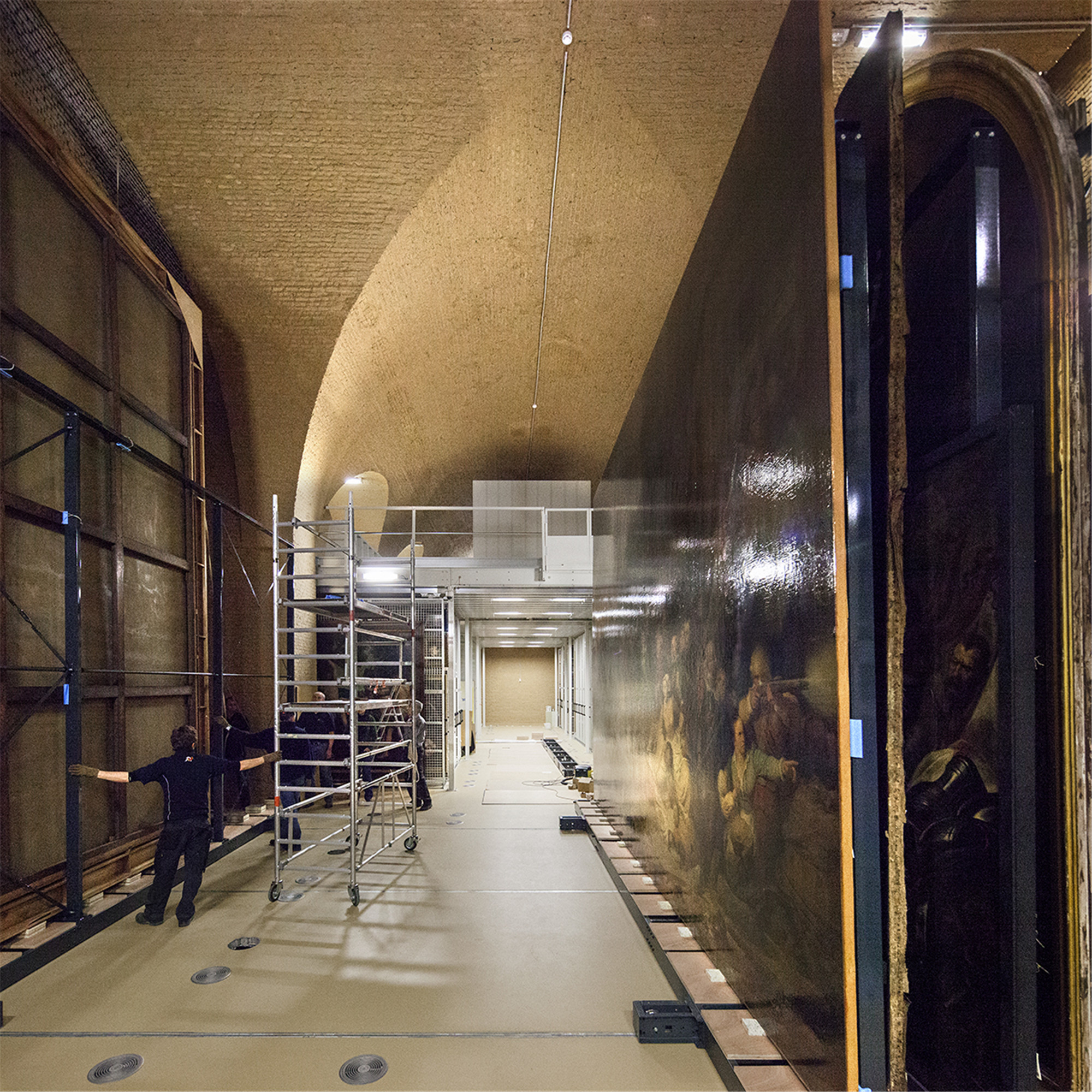
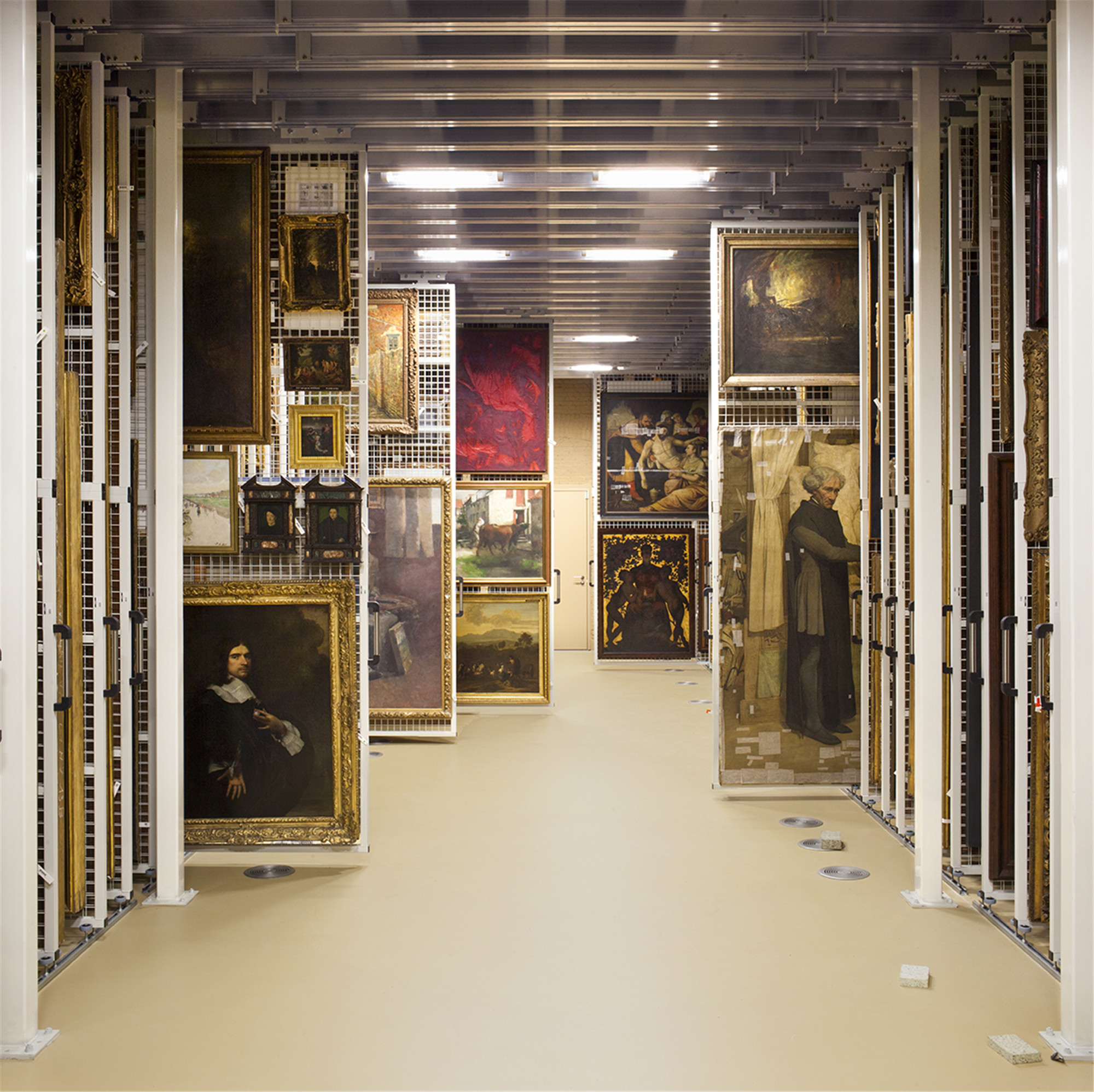
继续参观,便到了21世纪的全新展览空间,这是一个完全独立的场所,建于四个原始露台之内,巧妙地隐藏在博物馆现有结构的中心。这些空间由明亮的白色展厅组成,日光穿过大厅顶部的198个朝北的三角形屋顶构件,并通过四个大型采光井进入室内,地面处到天花板最大距离有23米。
Continuing their visit through the museum, visitors approach the new 21st century exhibition space, a completely autonomous venue, built within the four original patios and wisely unfolding at the heart of the museum’s structure. These spaces consist of bright white exhibition halls, where daylight beams in from 198 triple triangulated north-facing roof elements located on the top hall and flooding through four large lightwells, measuring up to 23 metres floor-to-ceiling.
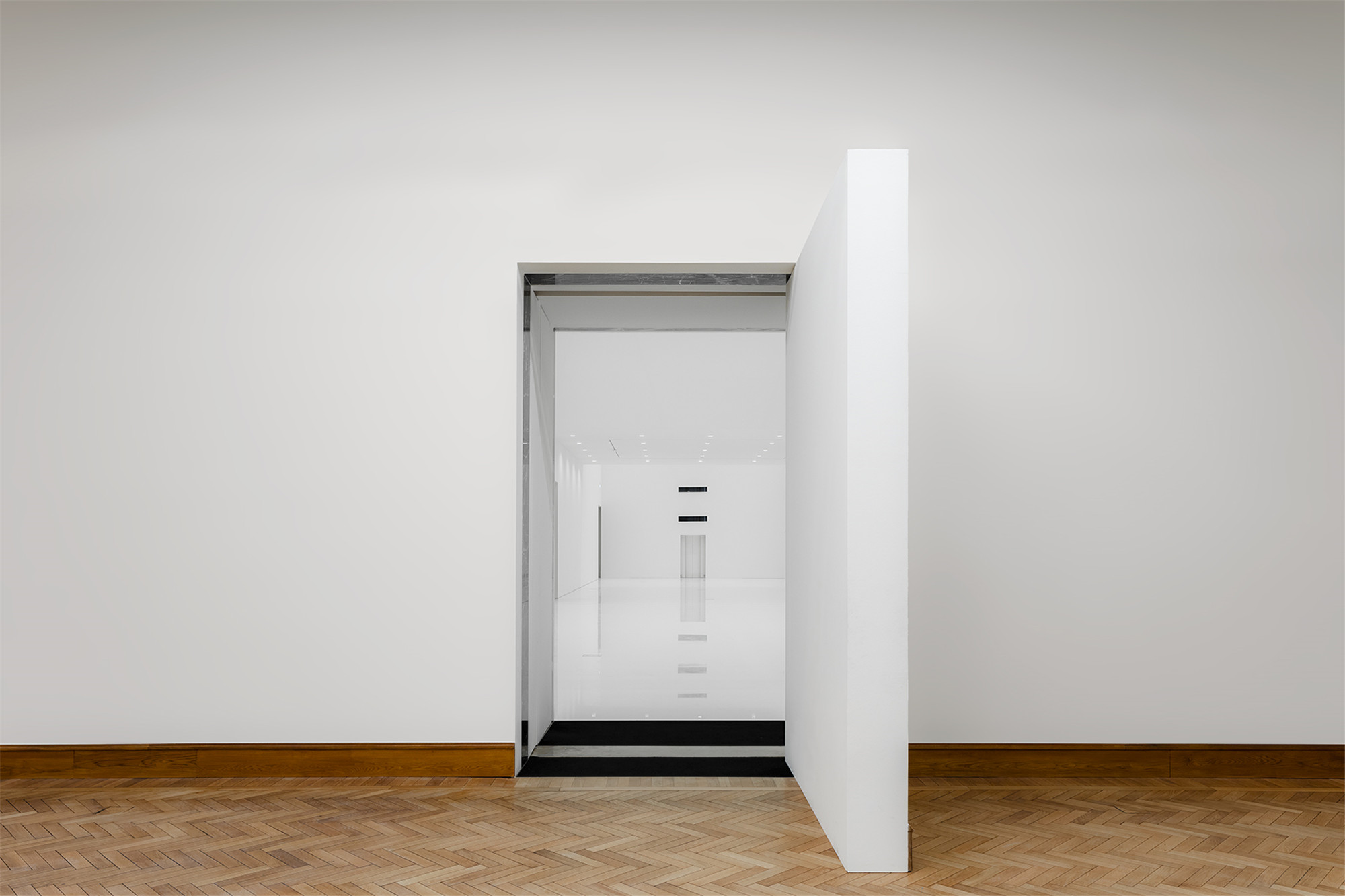
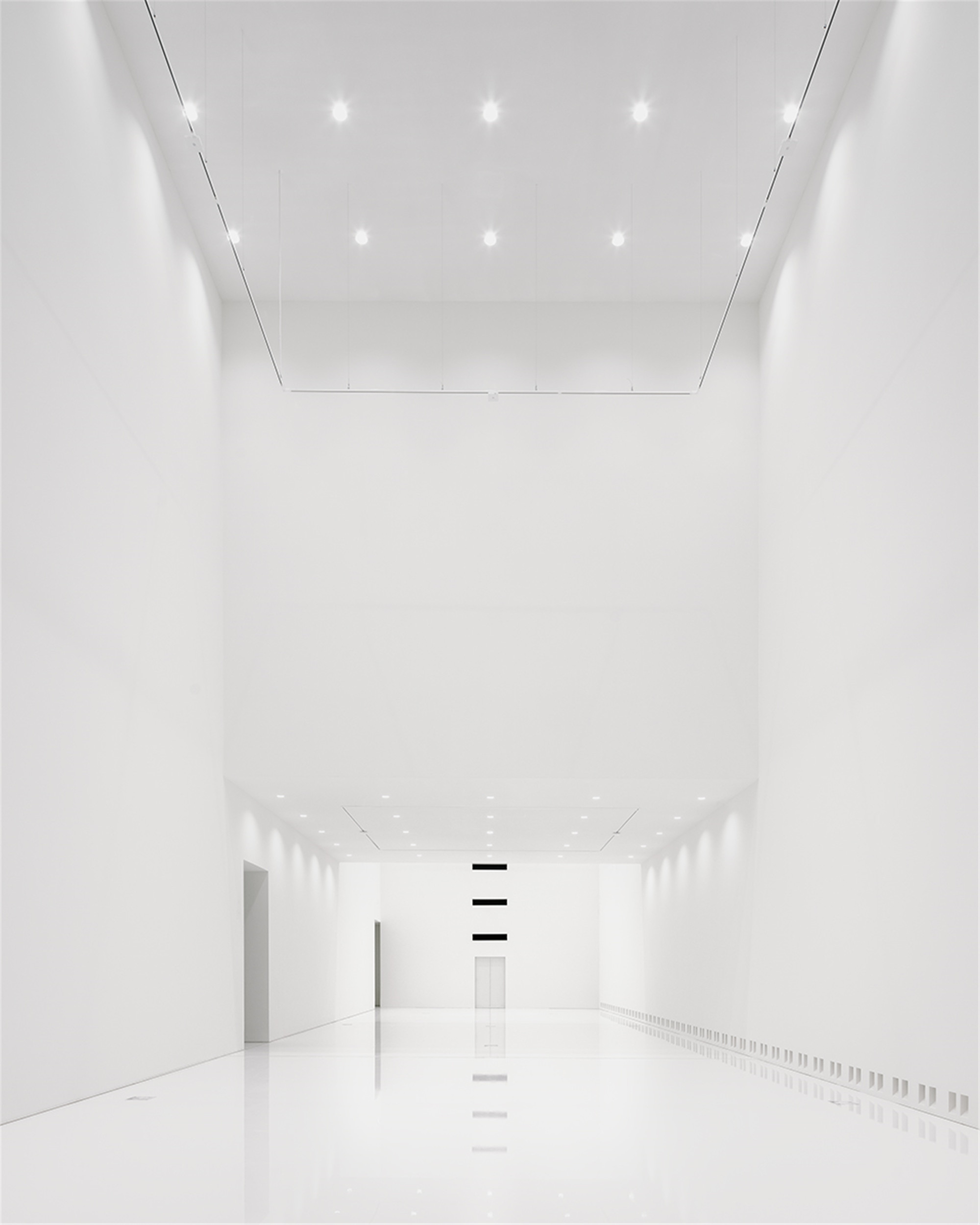
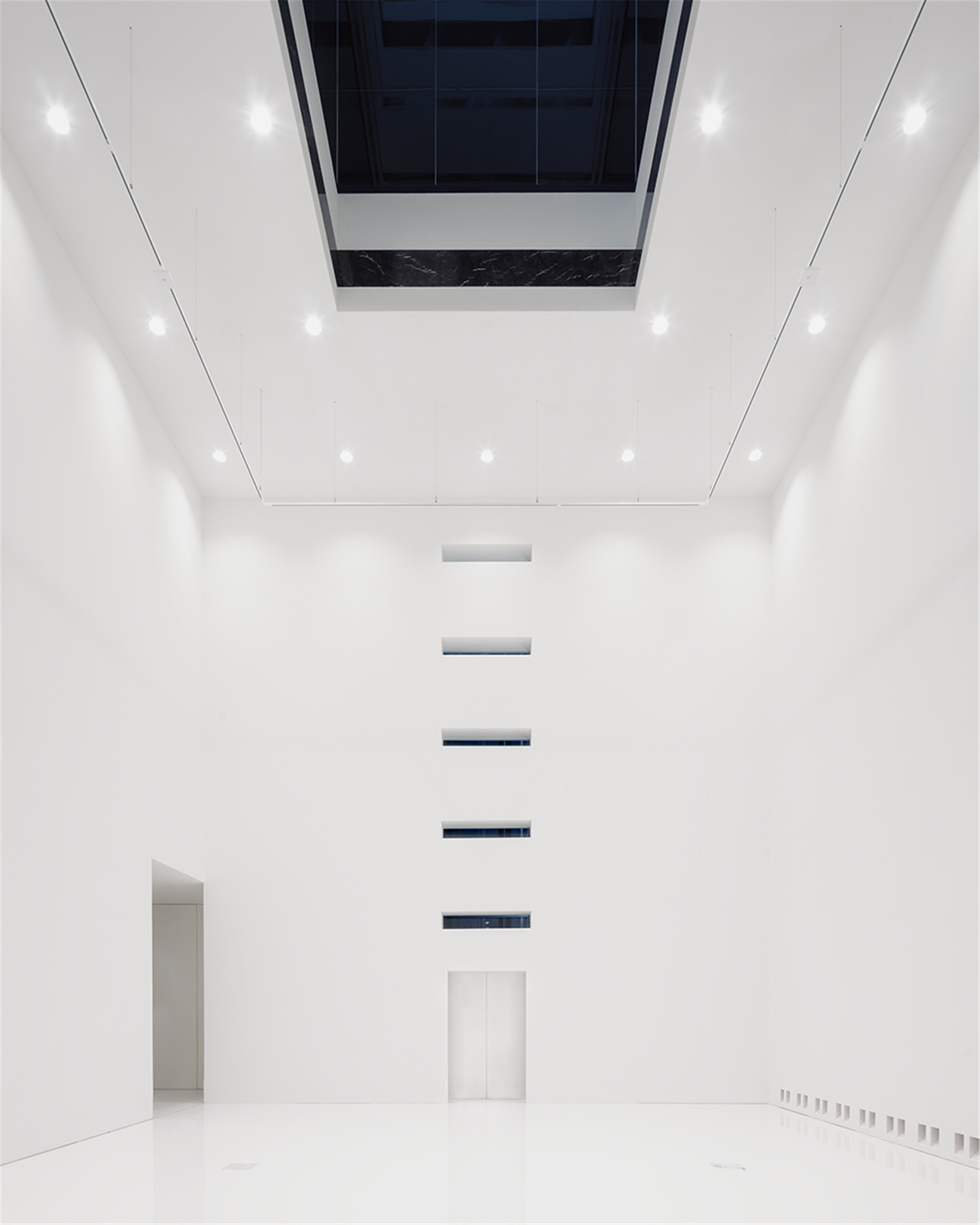
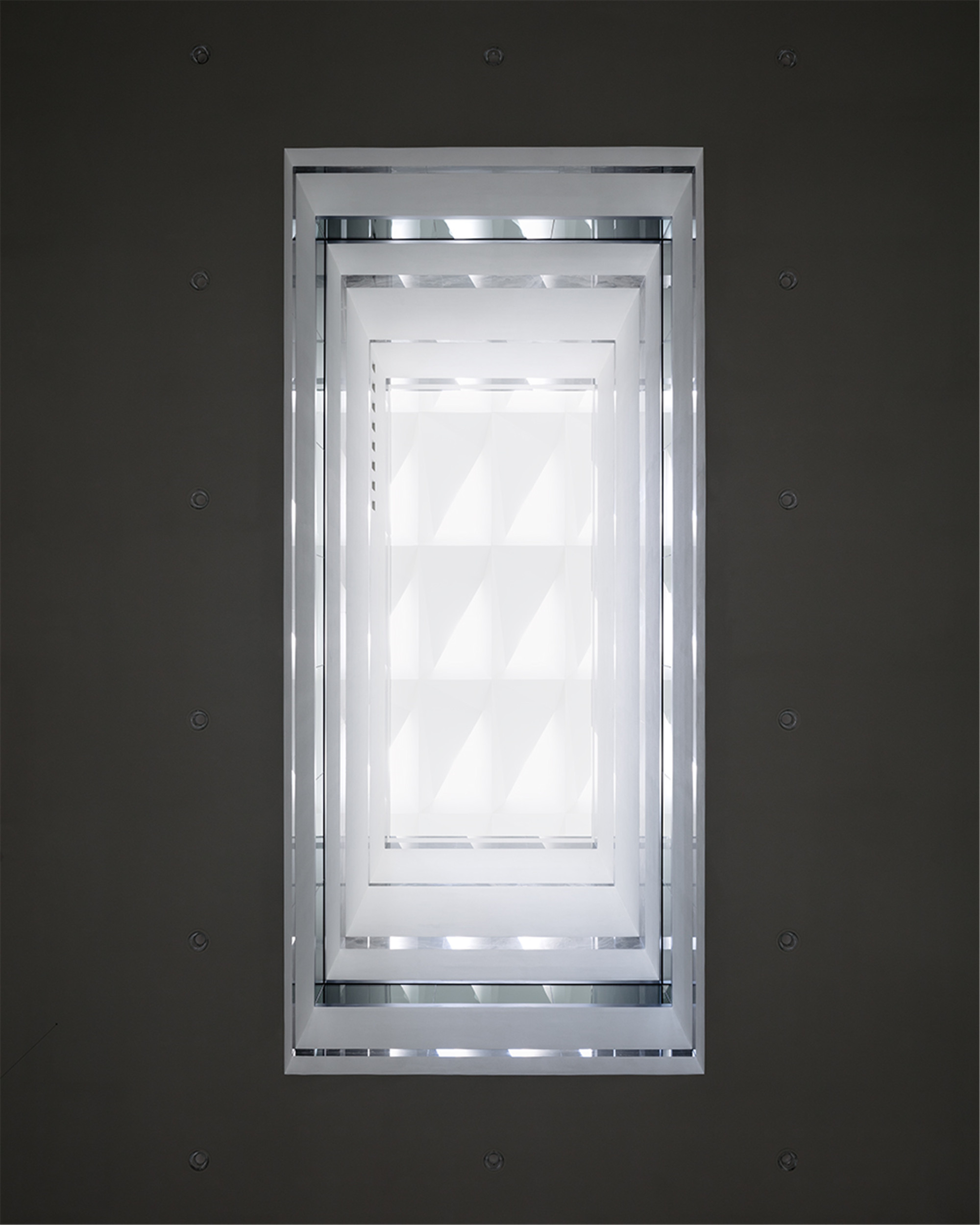
这些天窗用来引导和散射光线,还附加有照明功能,以补偿日光的季节性损失。新博物馆的三维聚氨酯高光地板增强了空间的效果。一系列强烈的垂直空间消解了来访者的体验,同建筑的历史特征并置。
These skylights are designed to guide and diffuse the light, and their structure also features additional lighting to compensate for the seasonal loss of daylight. The three-dimensional urethane high-gloss floors of the new museum enhance the dazzling effect of these spaces. A sequence of strong vertical spatial experiences dematerialize the visitor’s experience and juxtapose it with the historical identity of the building.

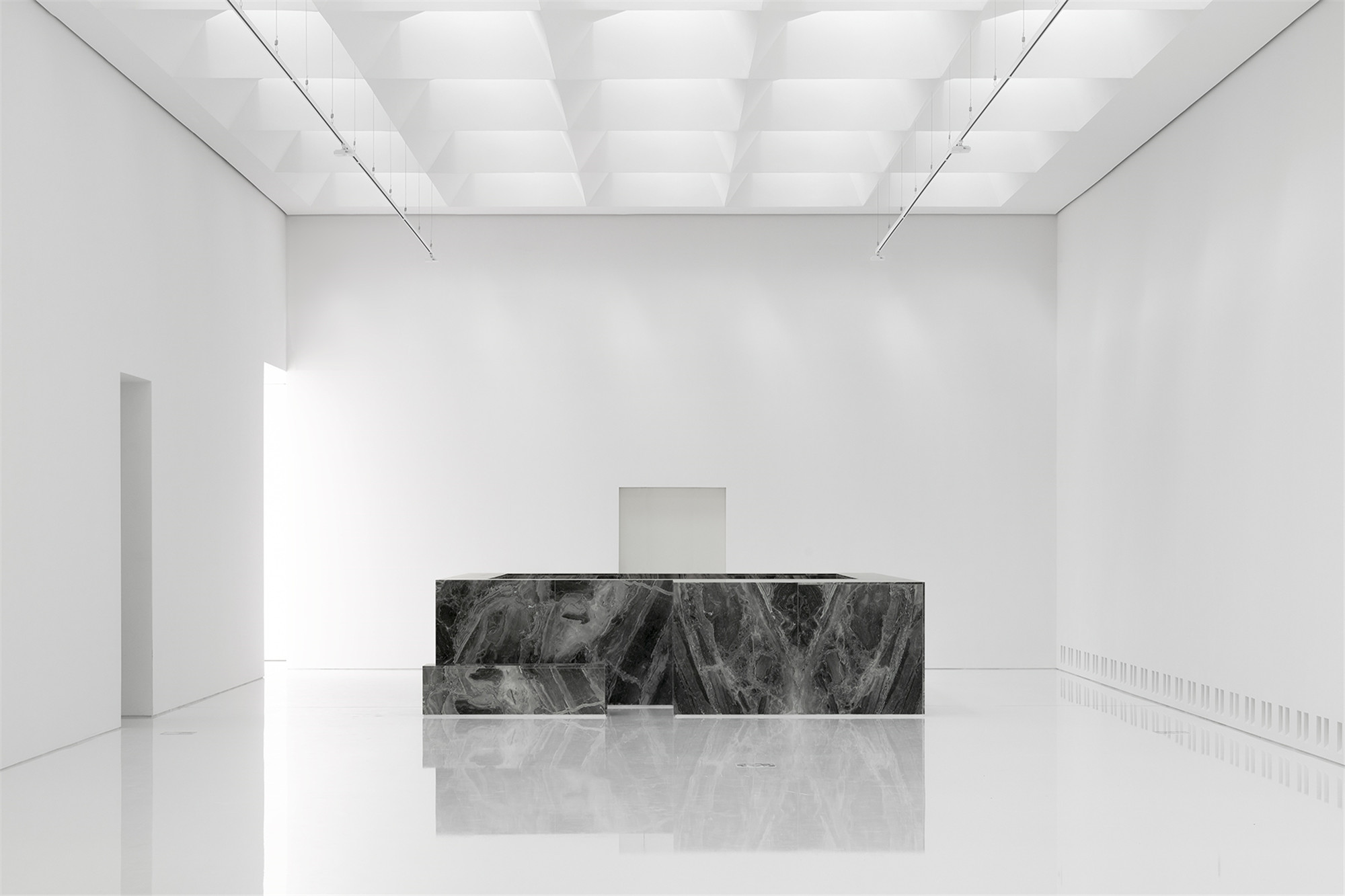
扩建部分“削减”了博物馆的实体,并添加了微妙的大理石镶嵌,以此呼应19世纪博物馆优雅的选材。
Where the new extension ‘cuts’ the museum’s solid mass, subtle marble inlays have been added, echoing the elegant 19th century museum’s materiality.
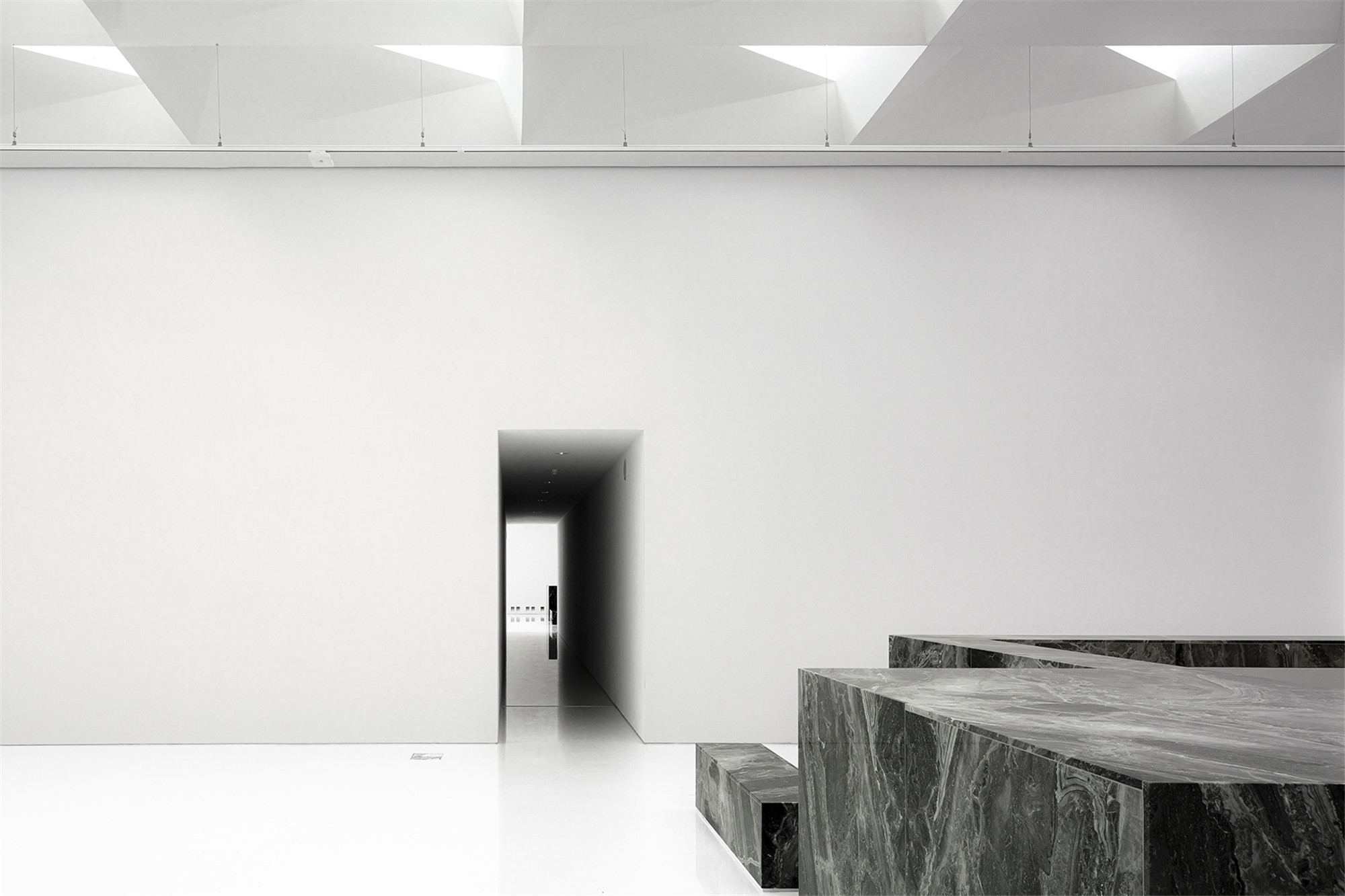

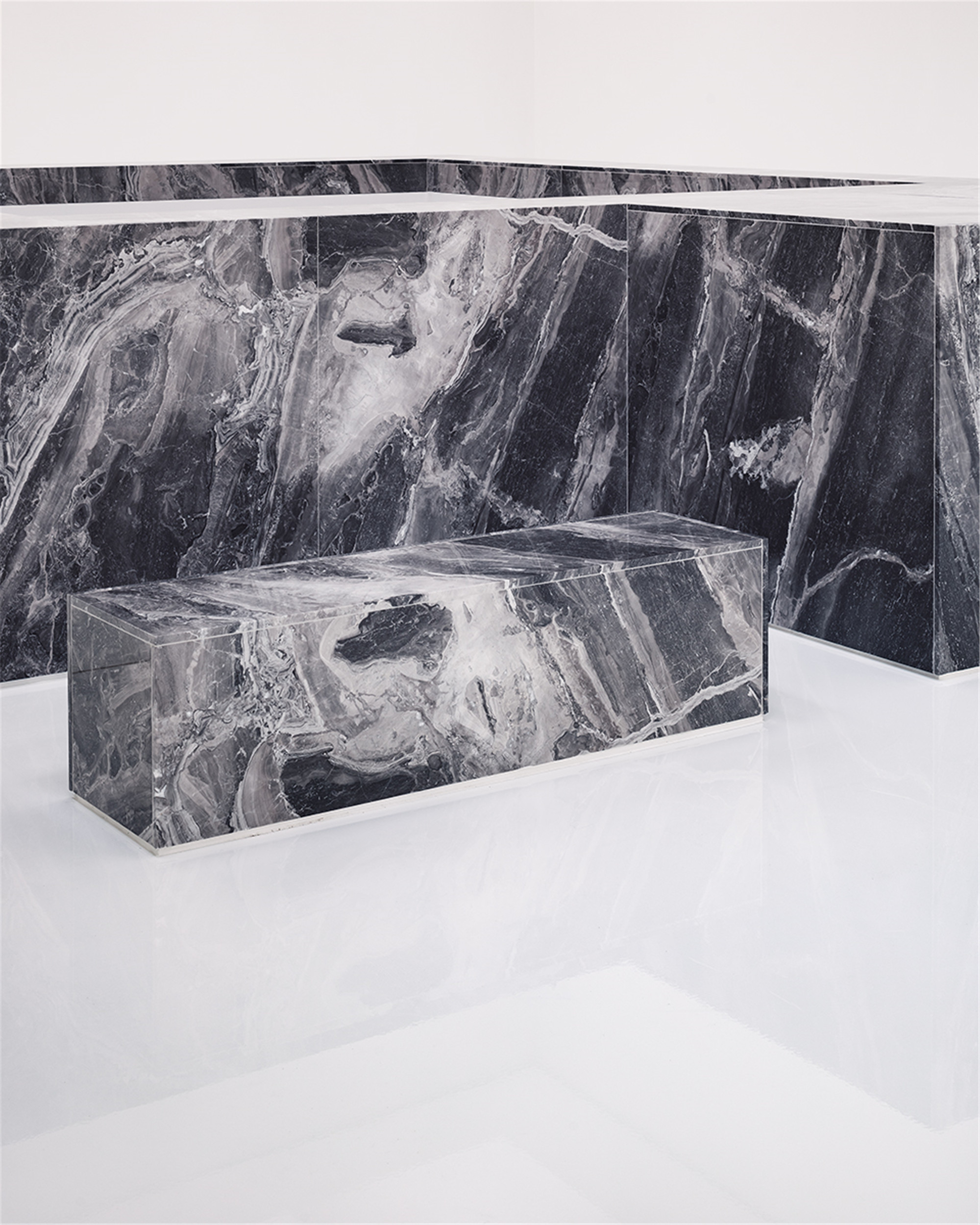
给人留下深刻印象的长楼梯将一层的新展厅同顶层的展厅联系起来,还可通向夹层。该夹层专门用于展示雕刻和素描等优美的艺术品,这些也可以通过四个采光井被看到,带着明显的深蓝色。这一配色方案也顺承了建筑原始的配色,但变得更明亮了。
A long, impressive linear staircase connects the new exhibition halls on the first floor to those located on the top floor, also granting access to an intermediate floor, which is dedicated to displaying delicate artworks such as etchings and drawings. These dark cabinets are also visible through the four lightwells and are characterized by intense dark blue. The chosen colour scheme is related to the original colour palette but uses brighter variations.
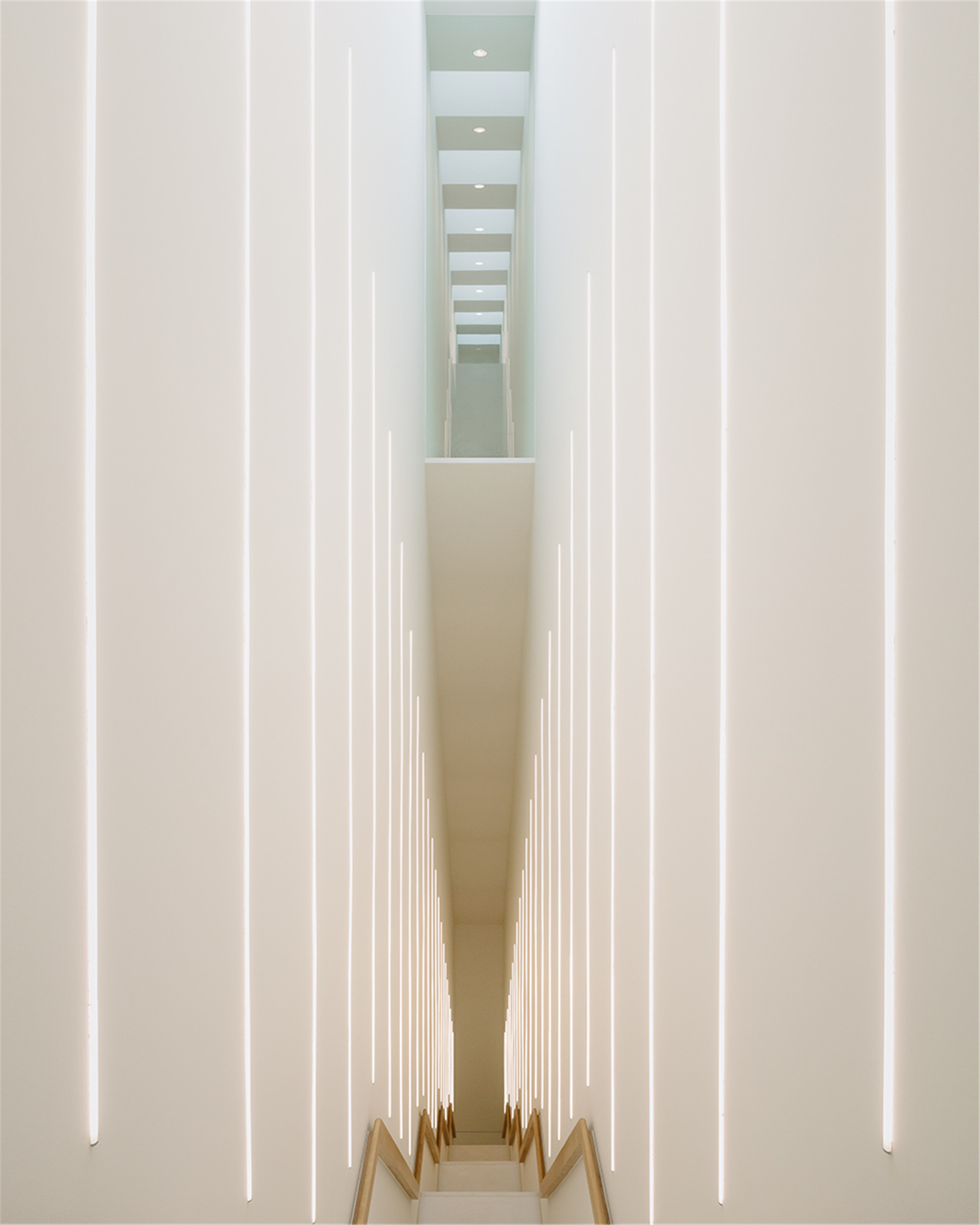

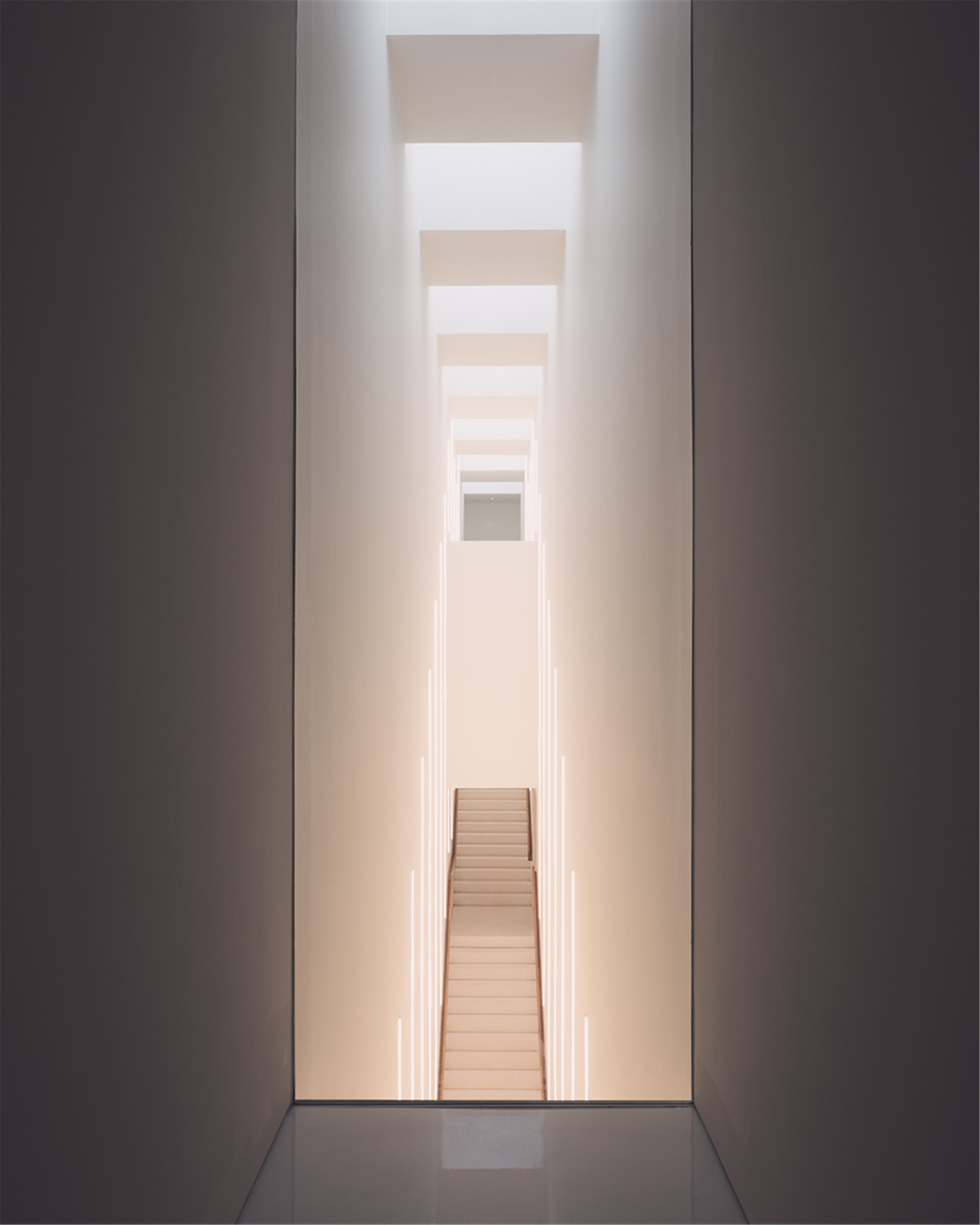
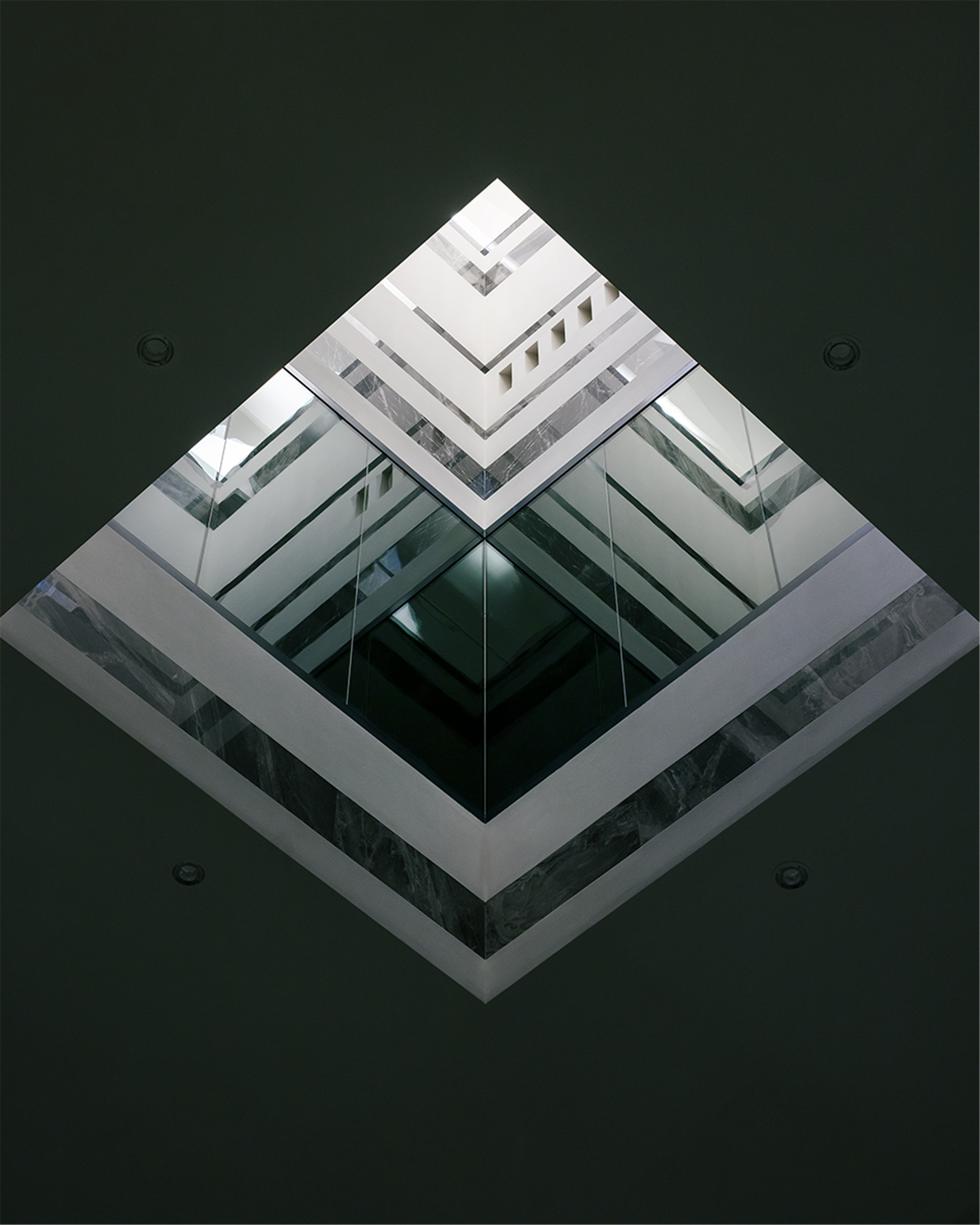
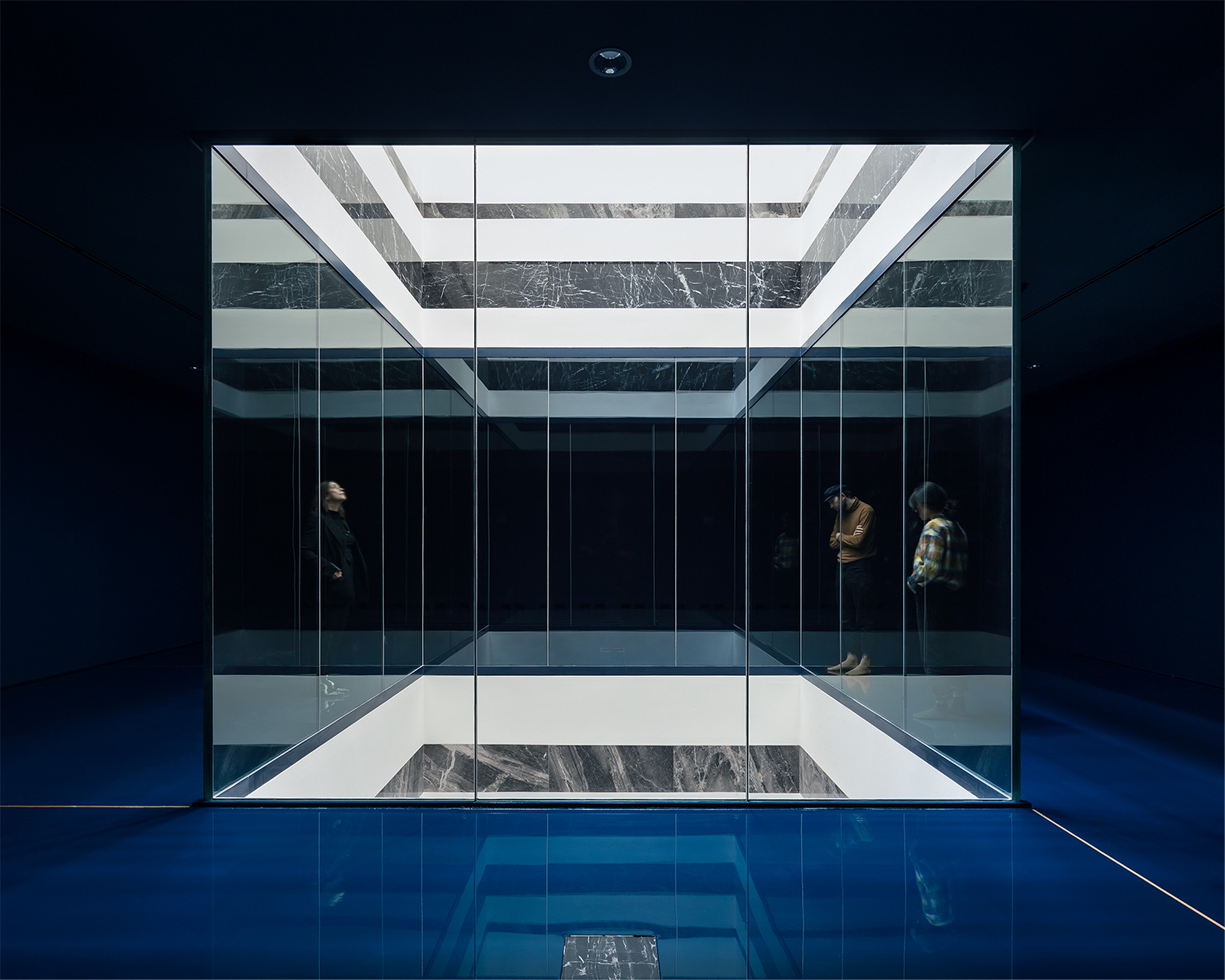

为了给新的博物馆及其先进的技术设施分配必要的空间,设计师采用了谨慎的决定,例如鲁本斯大厅和凡戴克大厅间原始墙壁的位置被移动,以连接蓝色夹层和上方新的展厅。装饰的另一个显著特征是一楼尺寸为5.5×9米的旋转墙,便于物流需要,允许艺术品或大型物体进入宽敞的电梯。
In order to allocate the necessary space for the new museum premises and its advanced technical installation, careful decisions have been taken, such as shifting the position of the original wall between the Rubens and Van Dyck halls in order to bridge the blue cabinets and the new exhibition halls above. Another remarkable feature of the renovation is the 5,5 x 9 metre pivoting wall on the first floor that can rotate to facilitate logistic flows and to allow artworks or large objects to access the wide art-elevator.
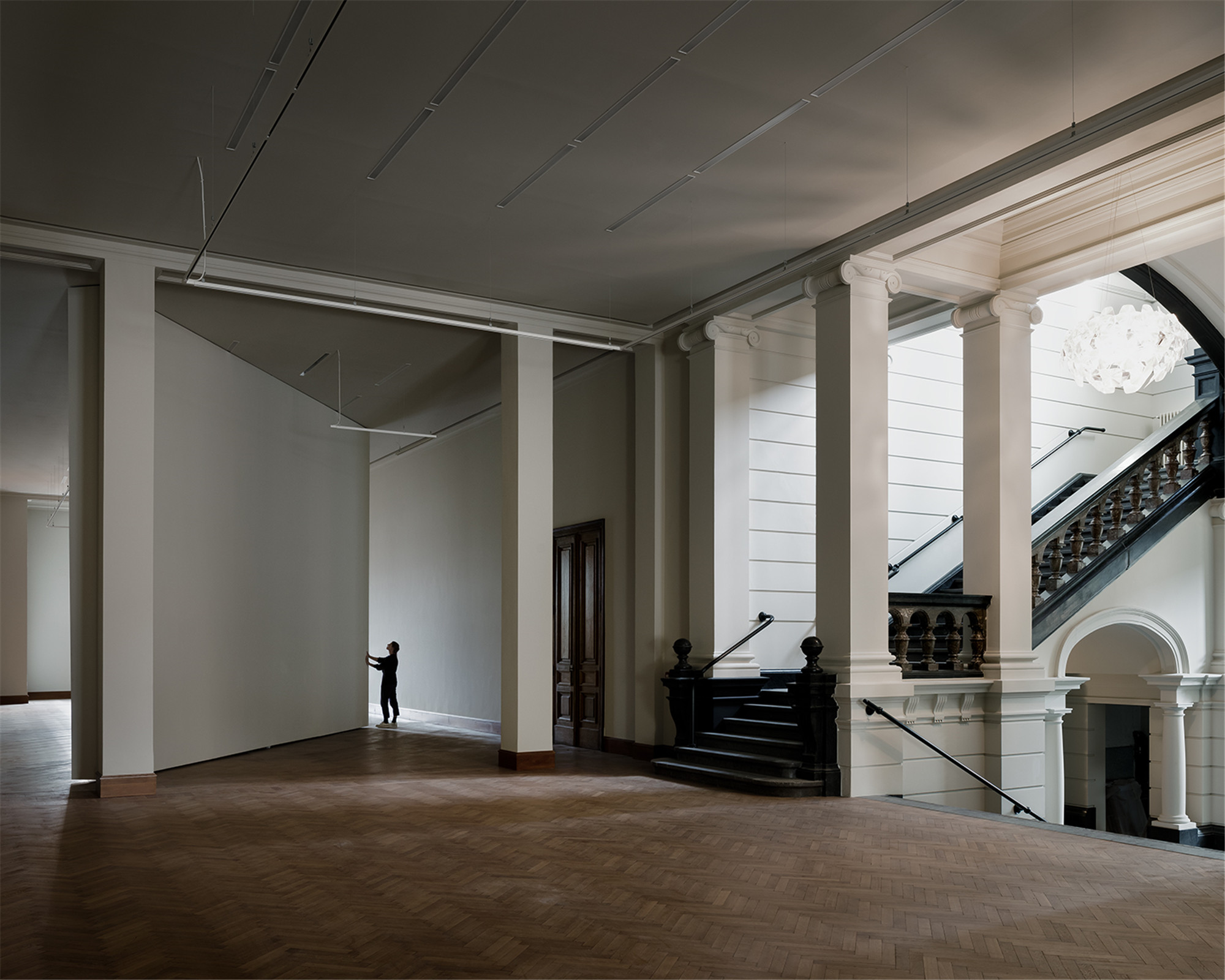
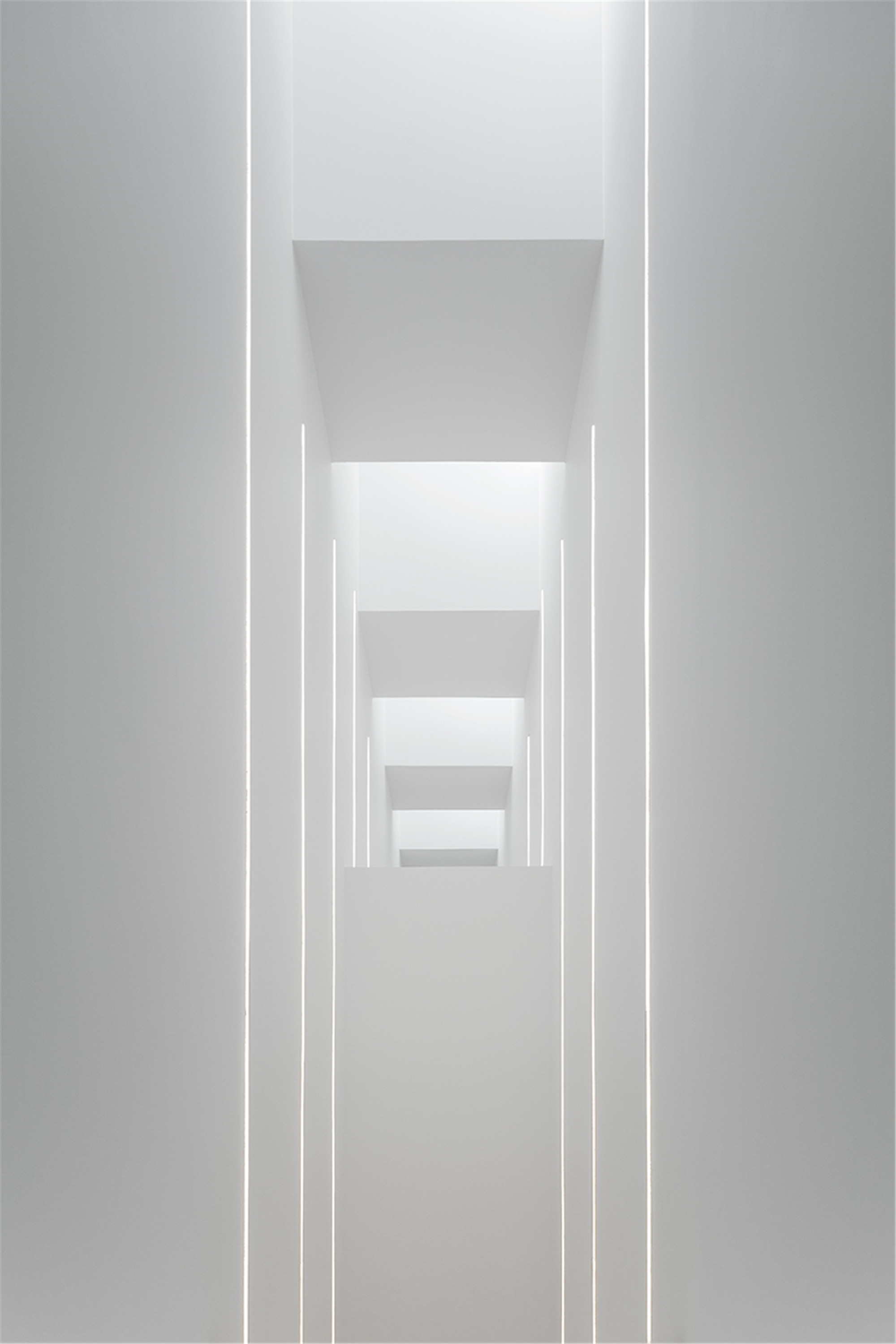
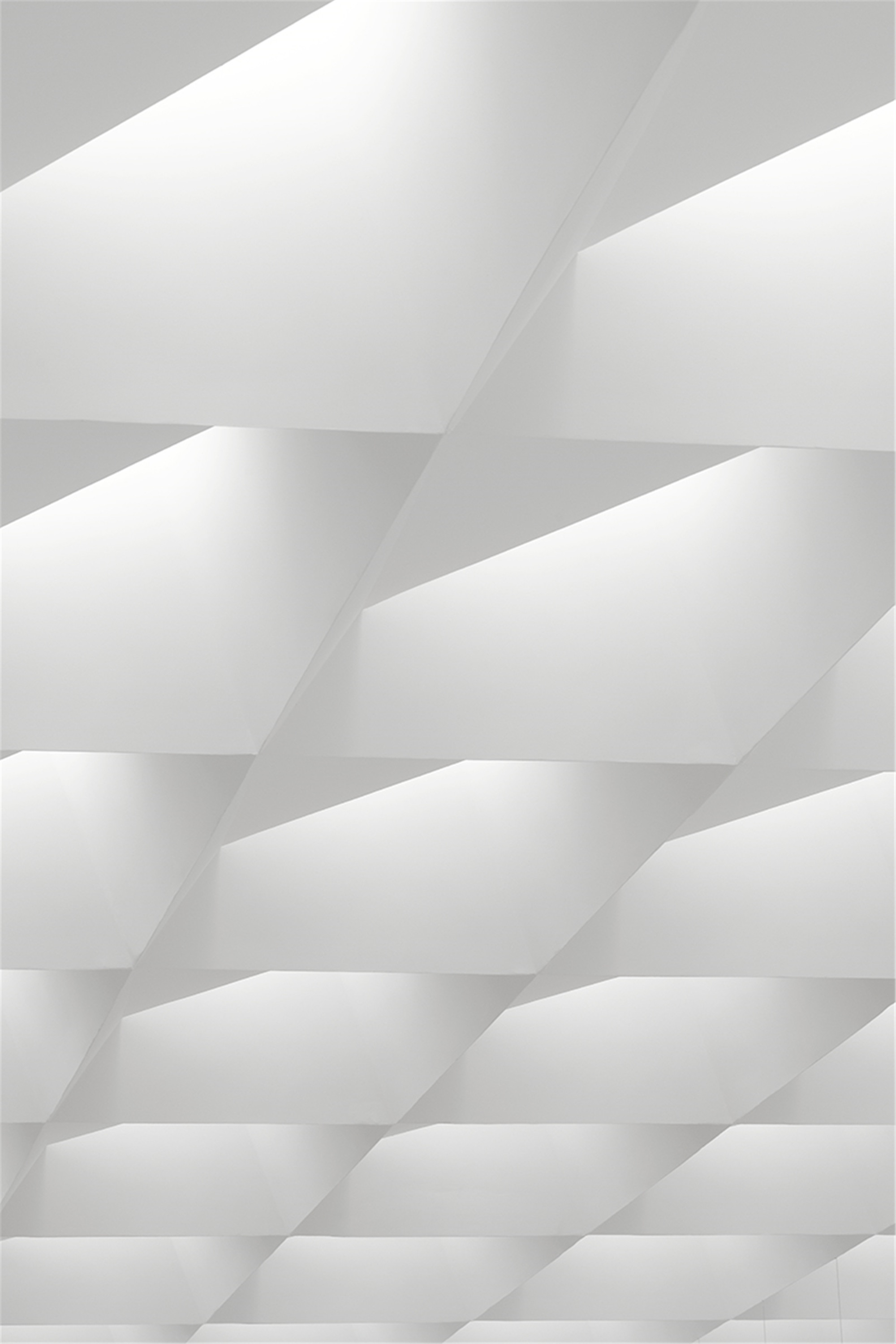
事务所为博物馆创造了一种建筑概念,以迷人的漫步体验,带领来访者参观两个对比鲜明的博物馆,并一点一点地进行自我展现。经验无法被预料,却总是平衡的:两条浏览路径都有挑战性,它们均为艺术而服务。
KAAN Architecten has created an architectural concept for KMSKA that takes the form of an enchanting journey where visitors explore the two contrasting and dialoguing museums, which unveil themselves little by little. The experience is never predictable yet always in balance: both routes are challenging and designed to serve the art.

设计图纸 ▽
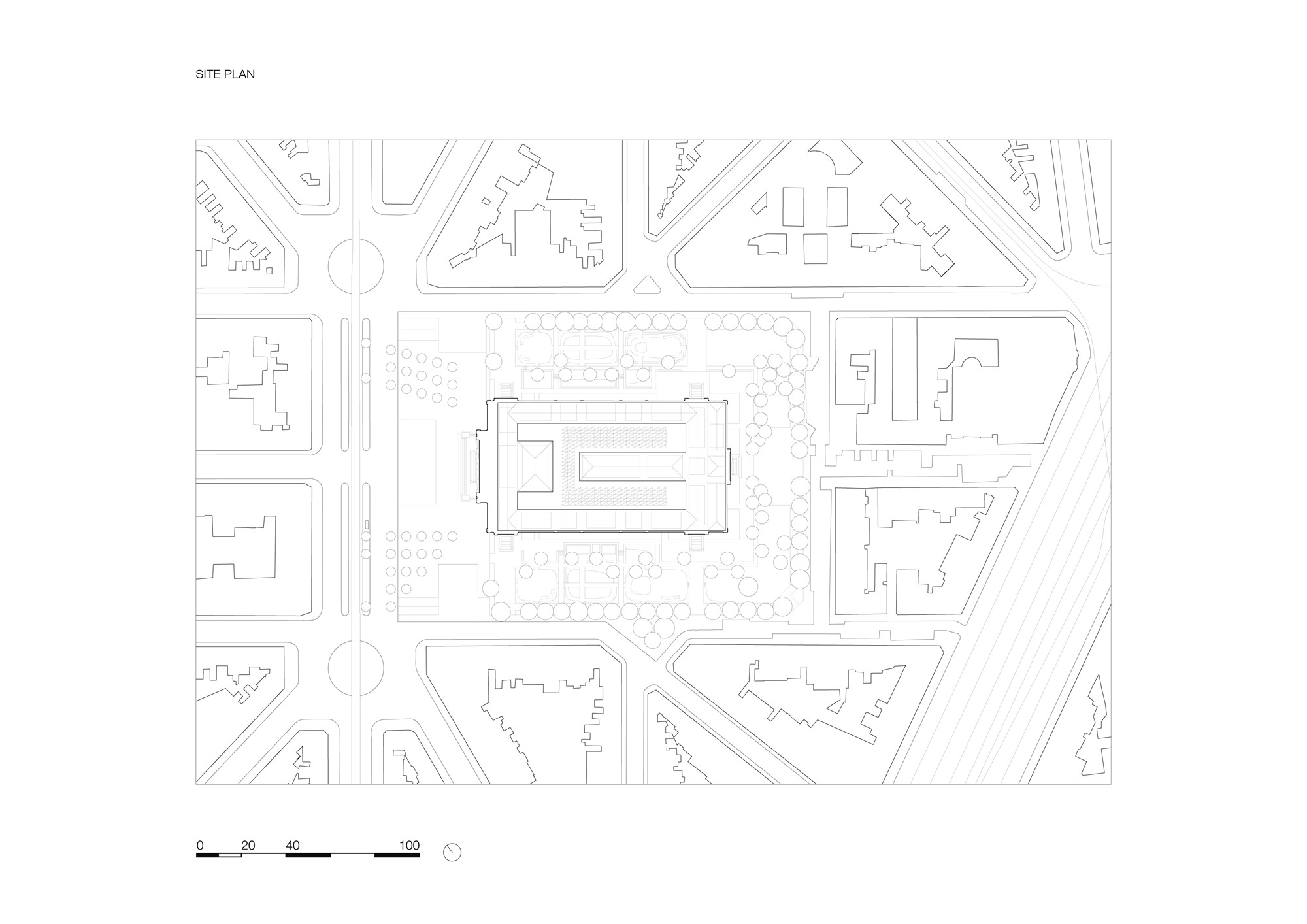
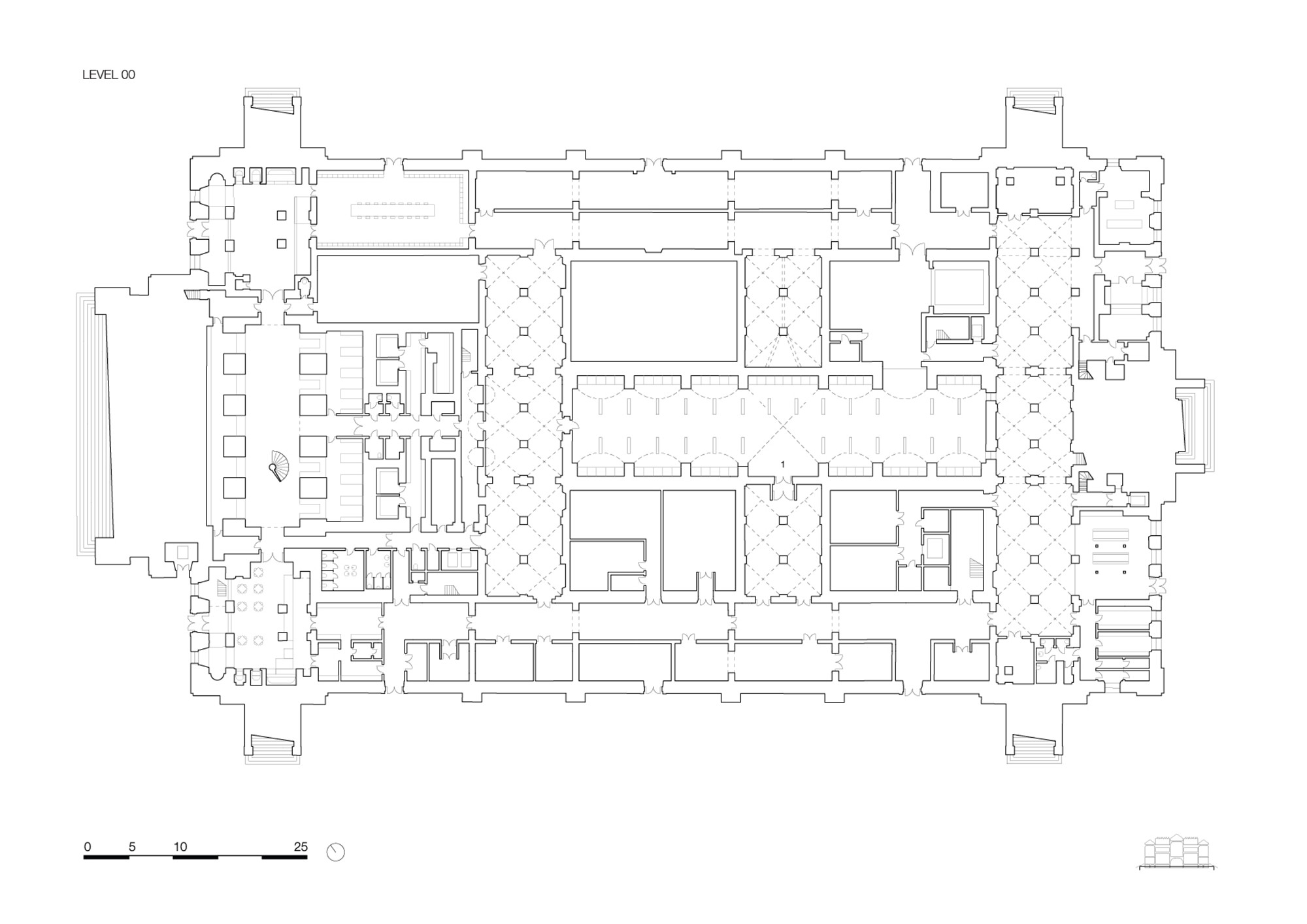


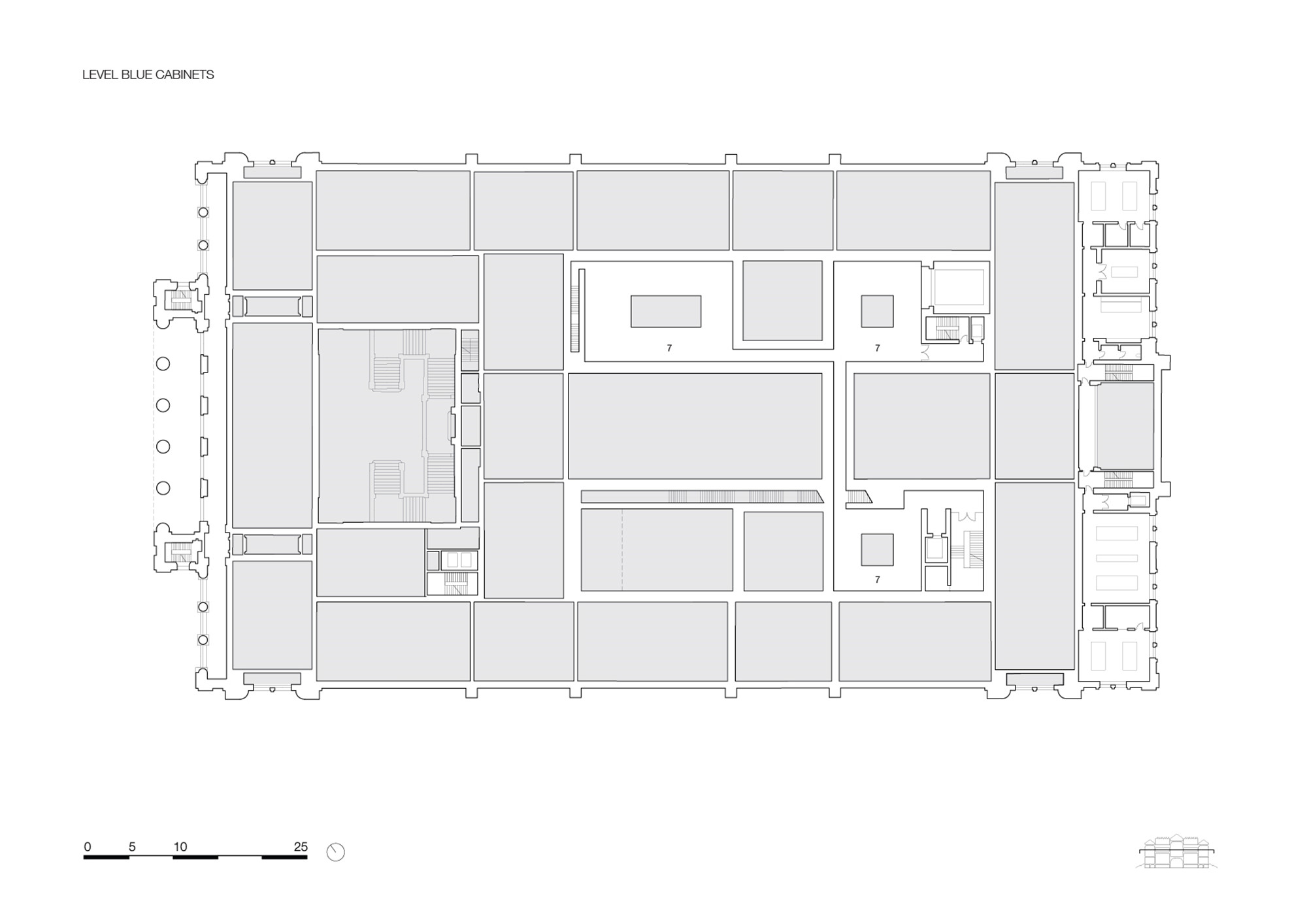
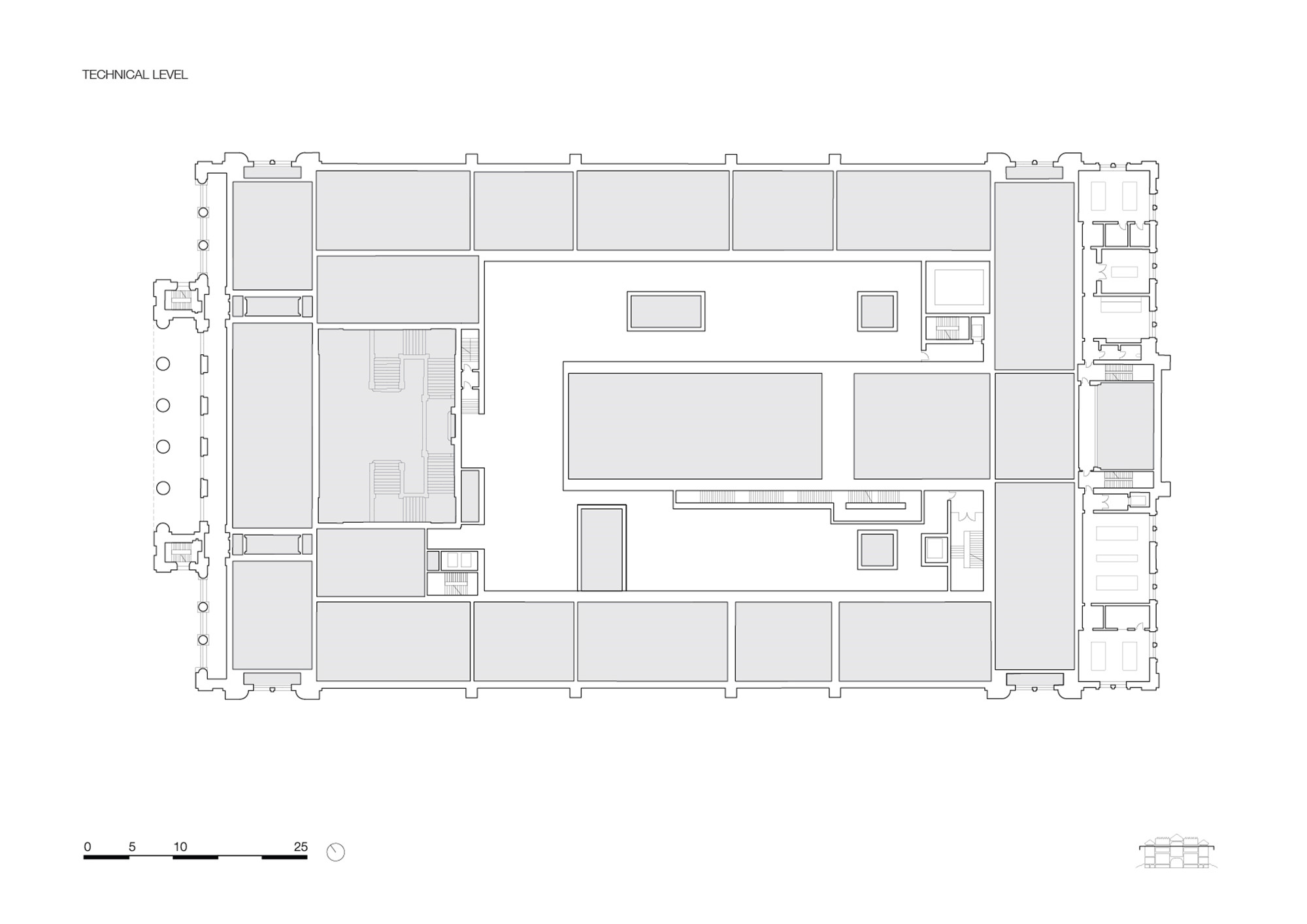
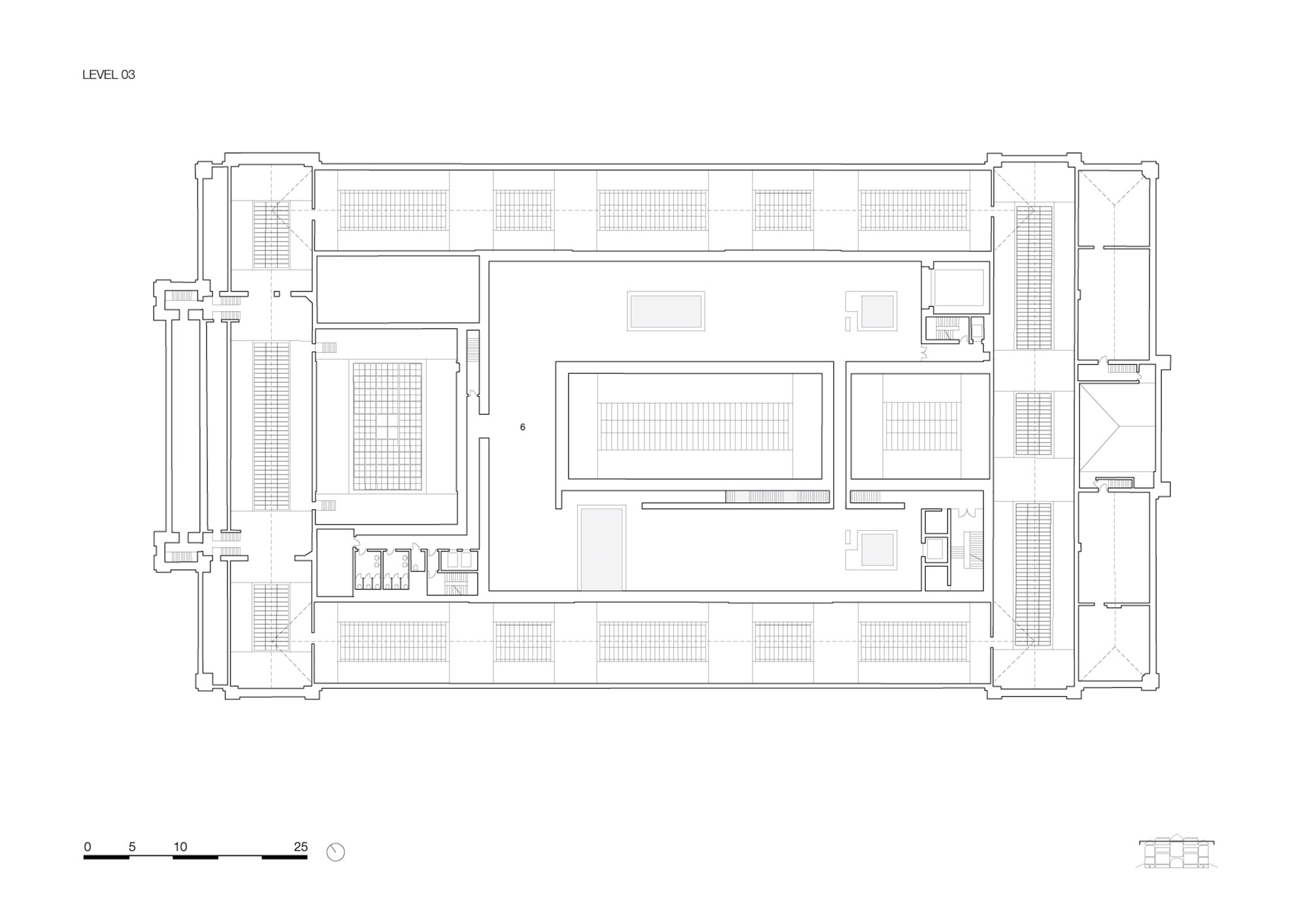
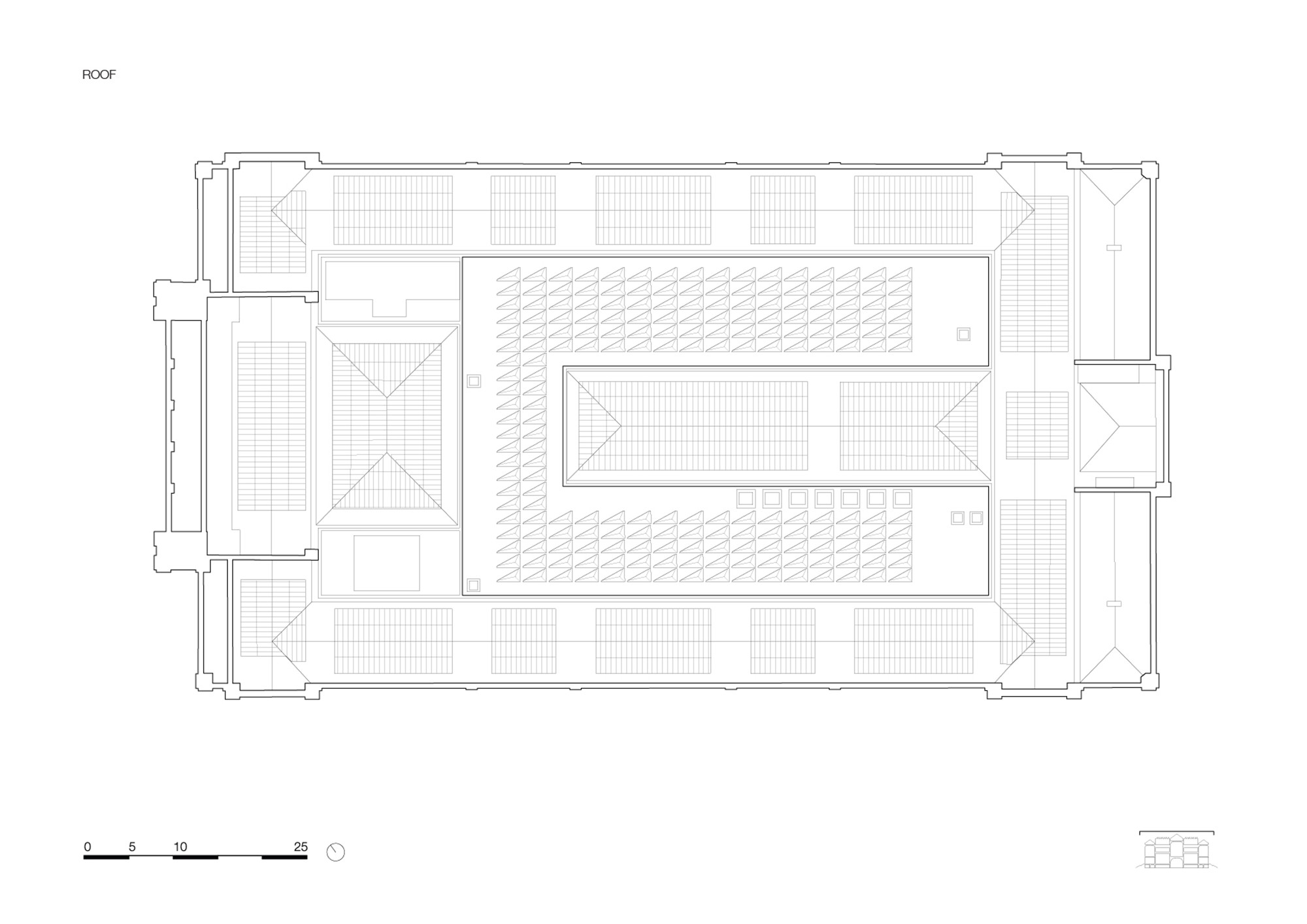
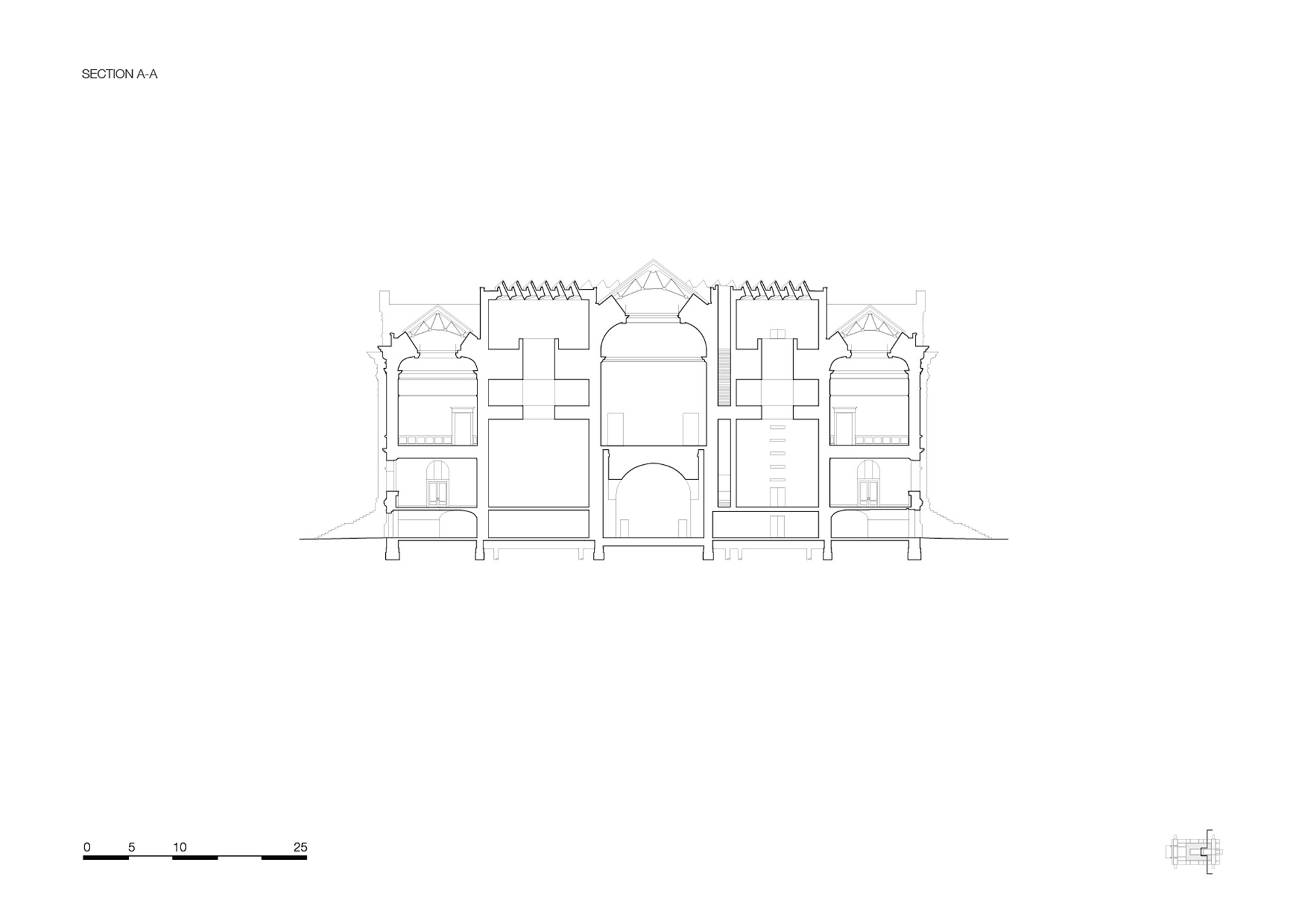

完整项目信息
Location: Leopold de Waelplaats 2, Antwerp, Belgium
Primary client: Departement Cultuur, Jeugd en Media (Vlaamse Overheid)
Mandated client: Het Facilitair Bedrijf (Vlaamse Overheid)
User: Koninklijk Museum voor Schone Kunsten Antwerpen (KMSKA)
GFA: 30.000 m2
Volume: 170.000 m3
Footprint building: 130 x 77 meters
MASTERPLAN KMSKA
Masterplan development: 2003 – 2010
PHASE 1 + PHASE 2
Design phase: January 2010 – ongoing
Construction: December 2011 – ongoing
Project costs: 66 Mln euro
Architect: KAAN Architecten (Kees Kaan, Vincent Panhuysen, Dikkie Scipio)
Senior project leader: Walter Hoogerwerf
Project team: Valentina Bencic, Maicol Cardelli, Alice Colombo, Aksel Çoruh, Davis de Cos Roman, Sebastian van Damme, Paolo Faleschini, Raluca Firicel, Eva French i Gilabert, Michael Geensen, Narine Gyulkhasyan, Marco Jongmans, Martina Margini, Giuseppe Mazzaglia, Laura Ospina, Maurizio Papa, Ismael Planelles Naya, Giacomo Rizzi, Ralph van Schipper, Kim Sneyders, Koen van Tienen, Niels Vernooij, Martin Zwinggi
PHASE 1 – preliminary works
Programme: Demolition, removal atomic bunker, asbestos removal
Architect: KAAN Architecten, Rotterdam
Contractor: P. Roegiers & co nv, Kruibeke
PHASE 2 – restauration 19th century museum and construction 21st century museum
Programme: Construction of the following premises: exhibition halls, offices, restoration ateliers, auditorium, museum depots, museum ateliers, cafeteria, library, museum shop, restaurant, interactive information zone
Architect: KAAN Architecten, Rotterdam
Contractor: THV Artes Roegiers – Artes Woudenberg, Kruibeke / Brugge
Management: KAAN Architecten, in collaboration with Bureau Bouwtechniek, Antwerp
Construction advisor, structural engineering, technical installations: Royal Haskoning DHV, Rotterdam
Physics, fire control: Royal Haskoning DHV, Rotterdam; Bureau Bouwtechniek, Antwerp; KAAN Architecten, Rotterdam
Lights and acoustics: Royal Haskoning DHV, Rotterdam; KAAN Architecten, Rotterdam
Restauration advisor: Architectenbureau Fritz, Eperheide; KAAN Architecten, Rotterdam
Fixed furniture: KAAN Architecten, Rotterdam
版权声明:本文由KAAN Architecten授权发布。欢迎转发,禁止以有方编辑版本转载。
投稿邮箱:media@archiposition.com
上一篇:由表及里的更新:北京鼓楼西大街33号院改造 / 中国院一合建筑
下一篇:在建方案 | 层叠铝塔:东京MONOSPINAL办公楼 / Makoto Yamaguchi Design